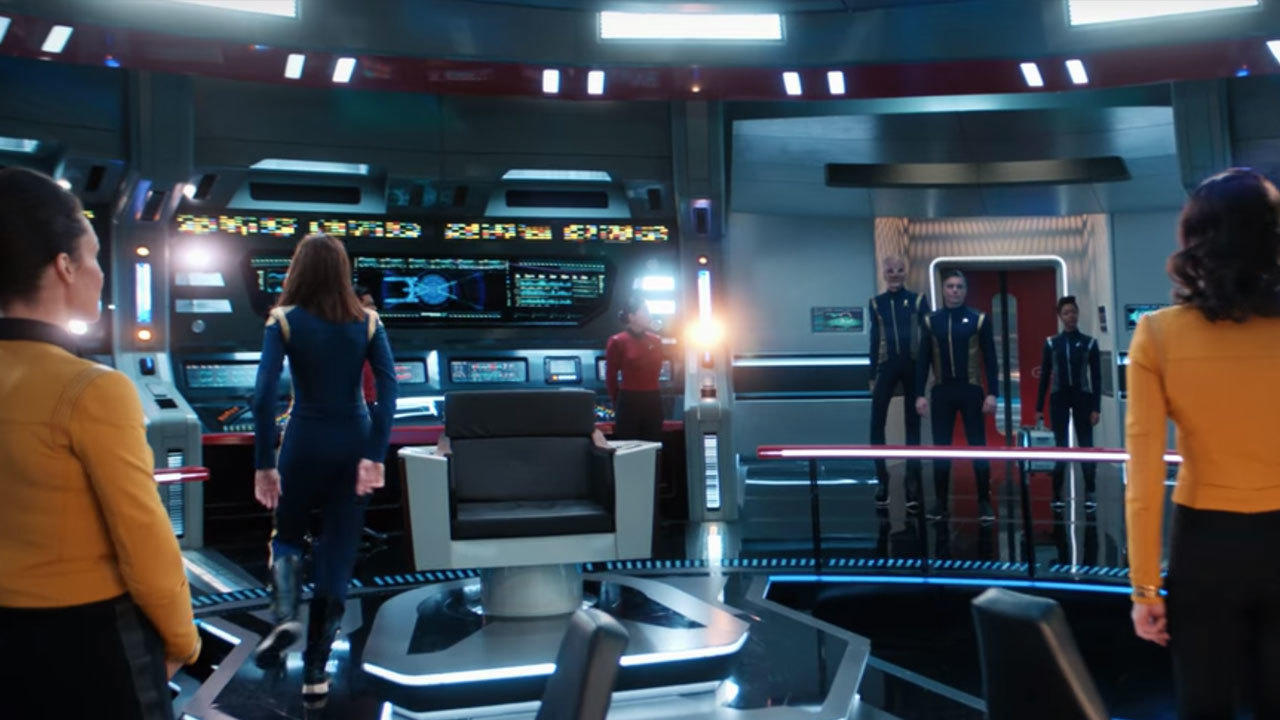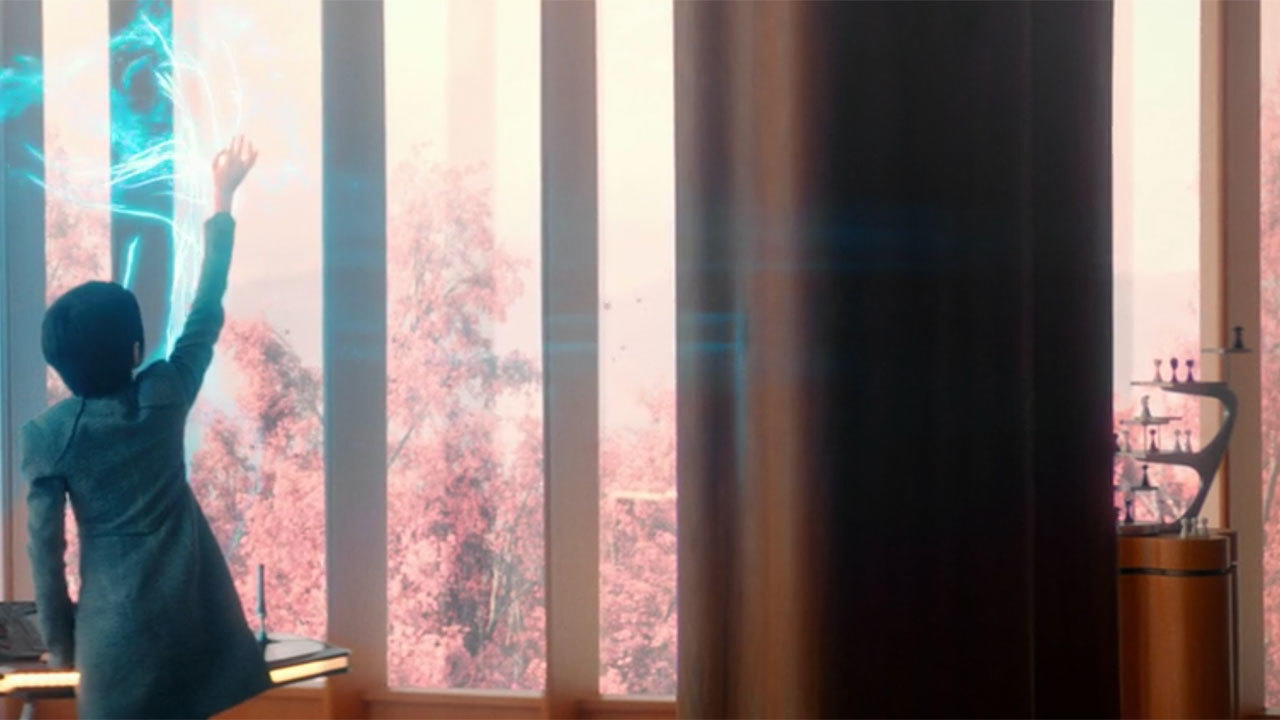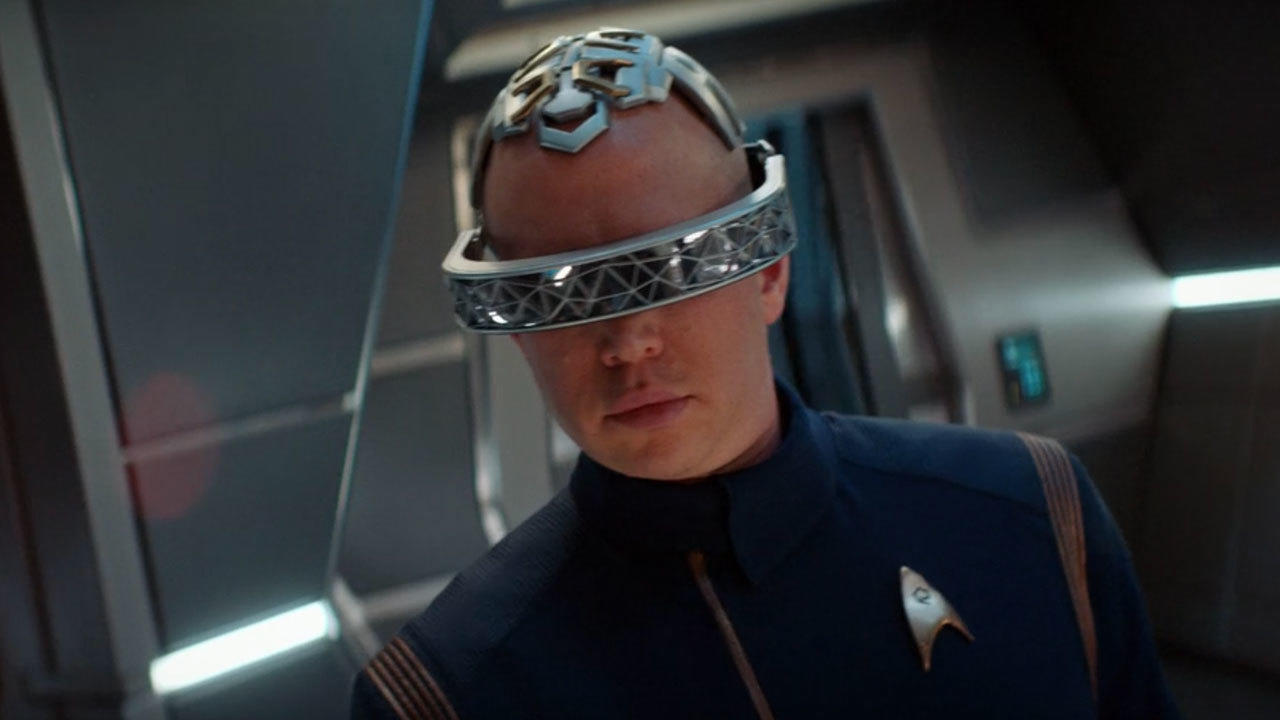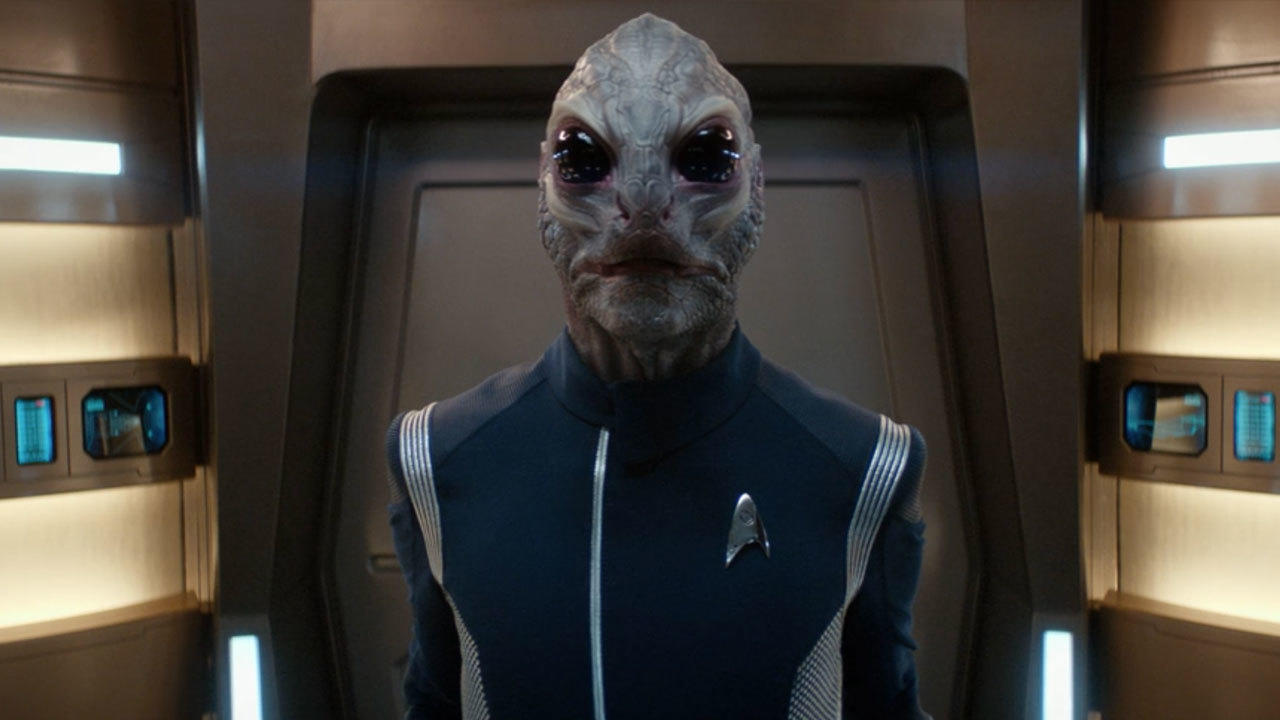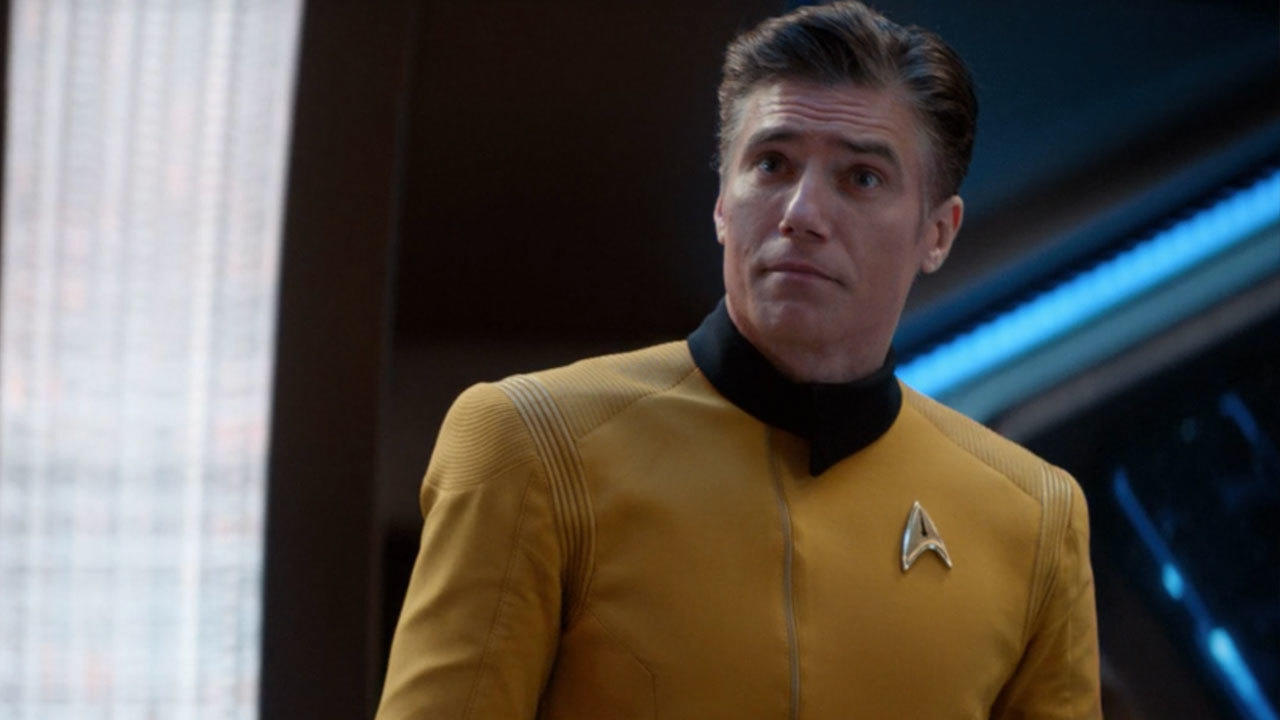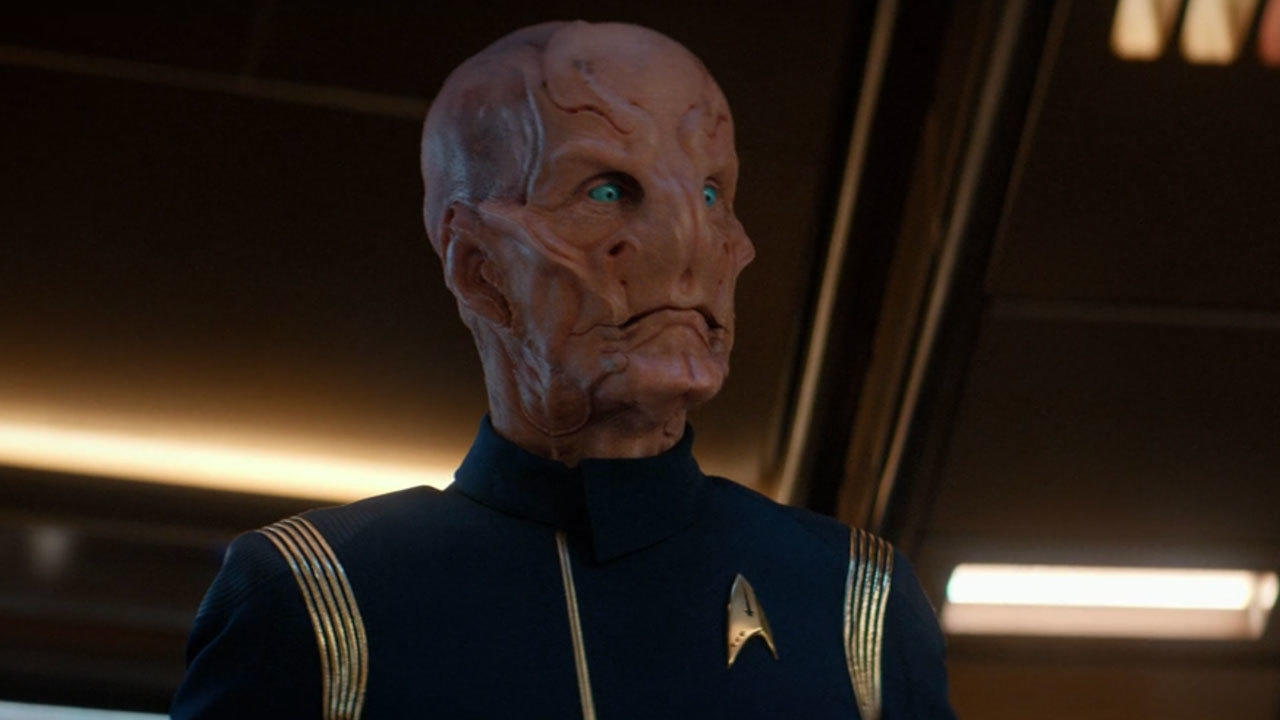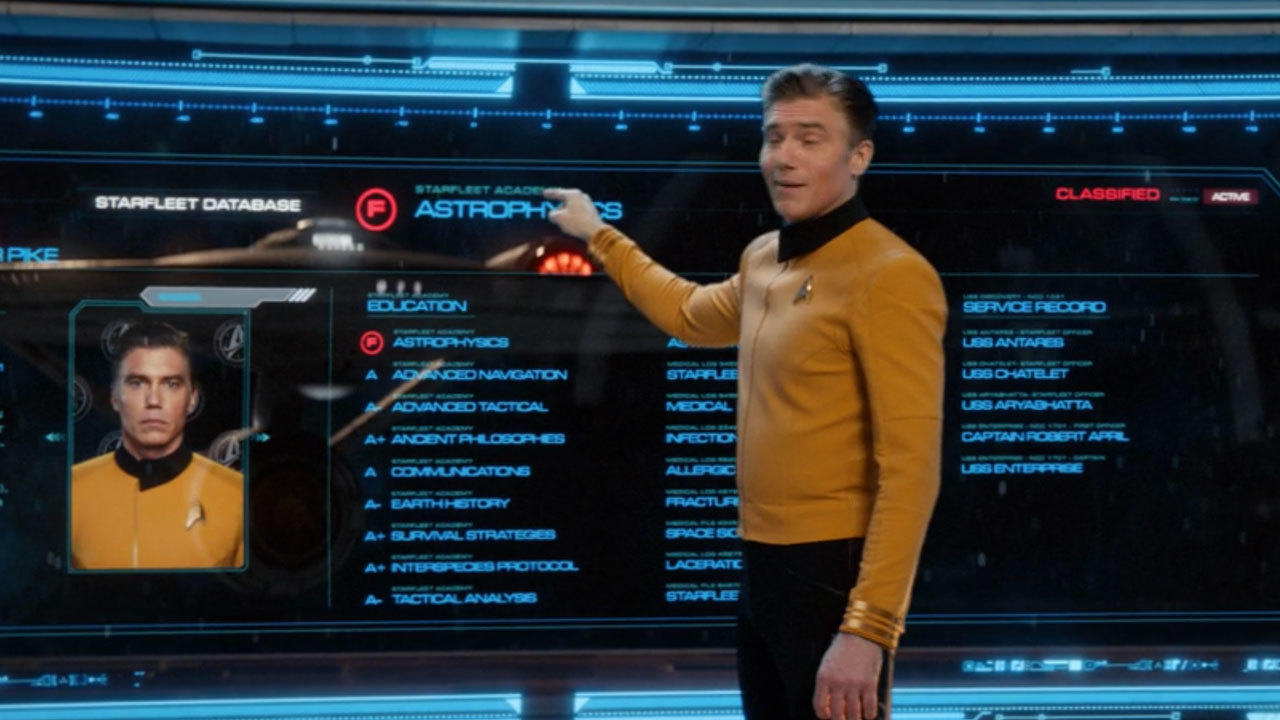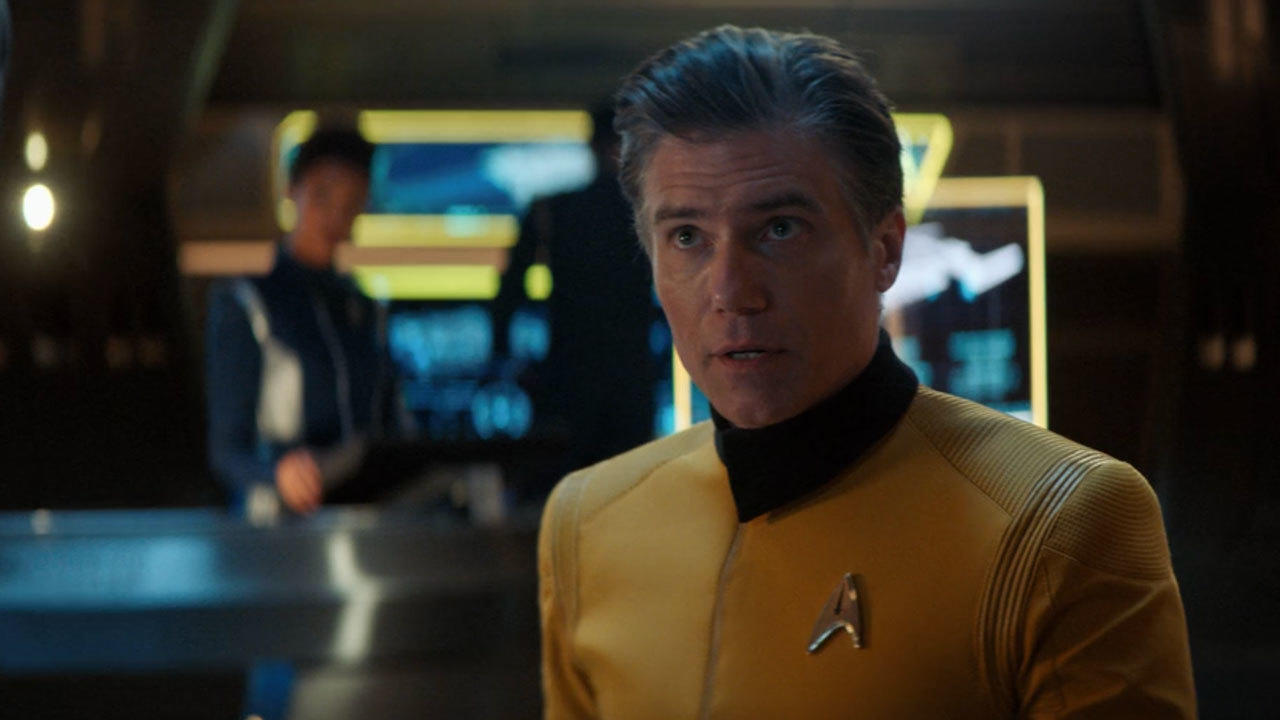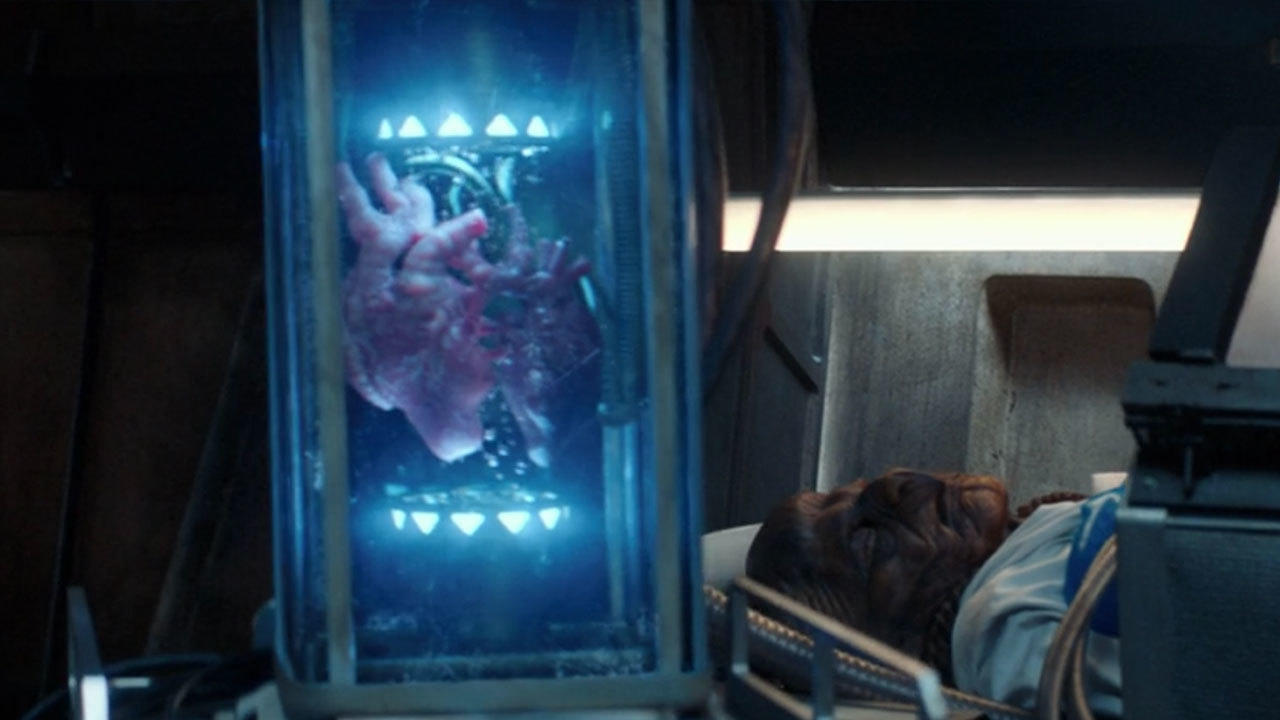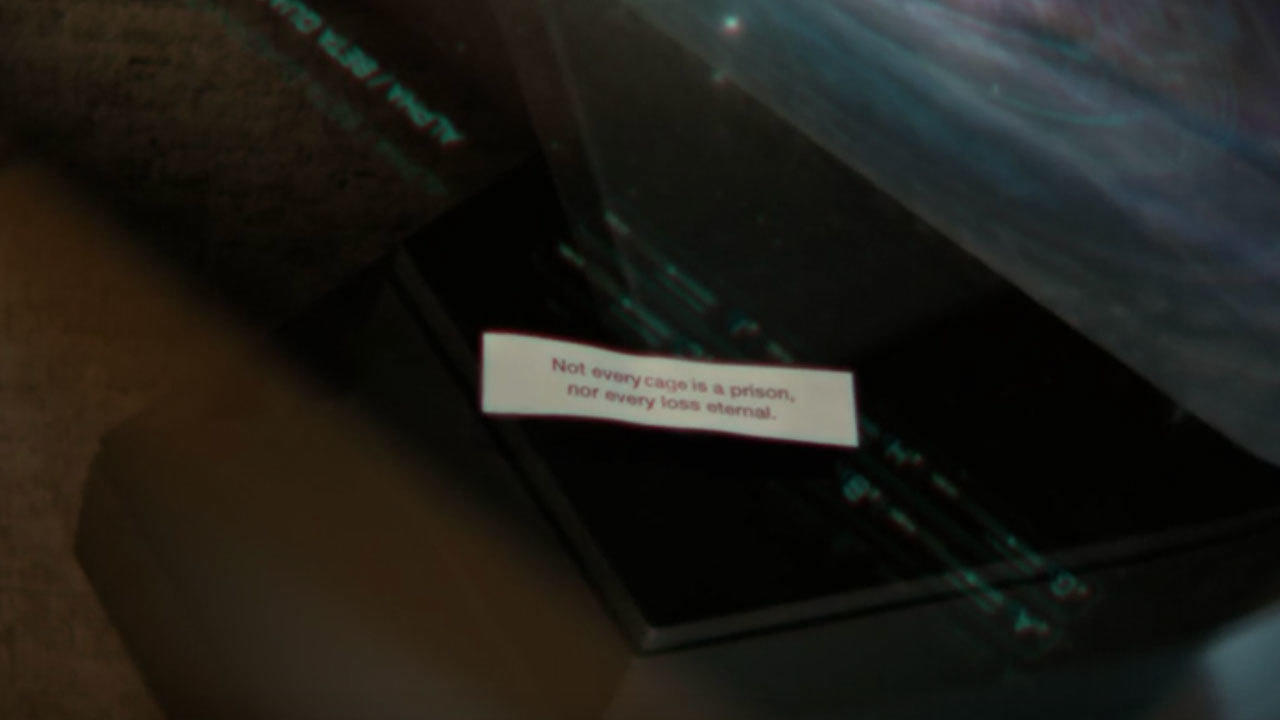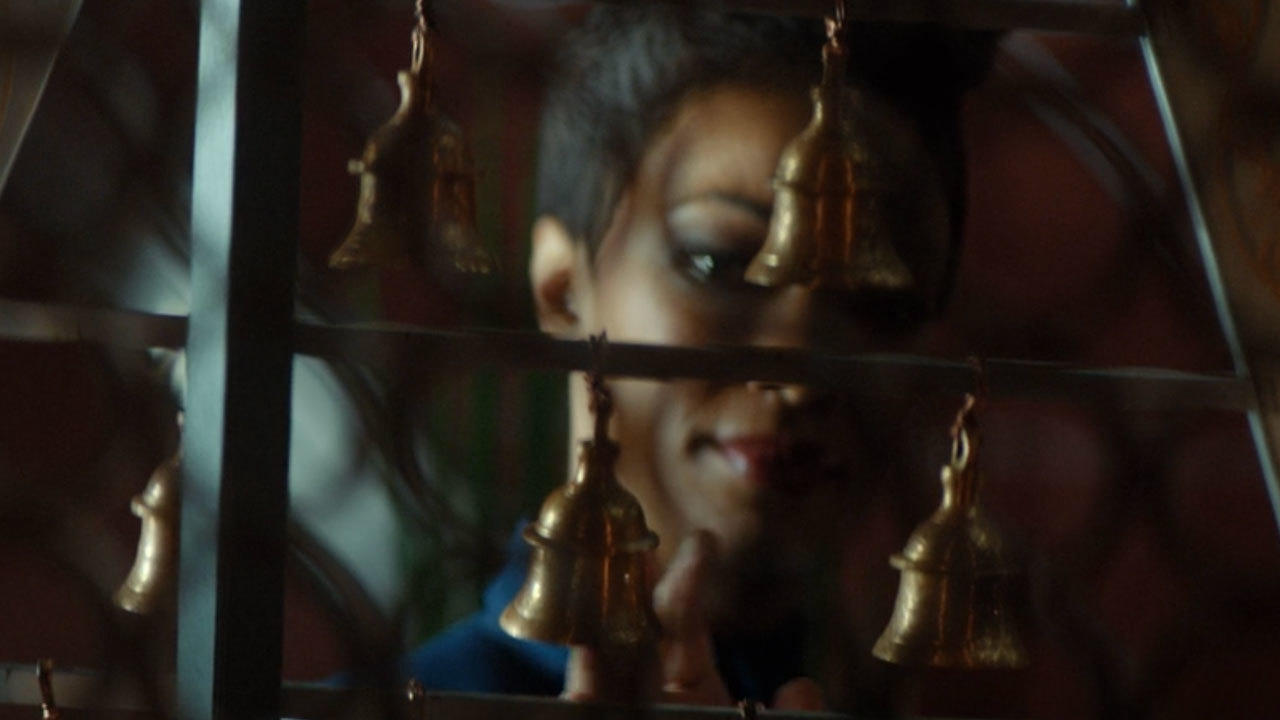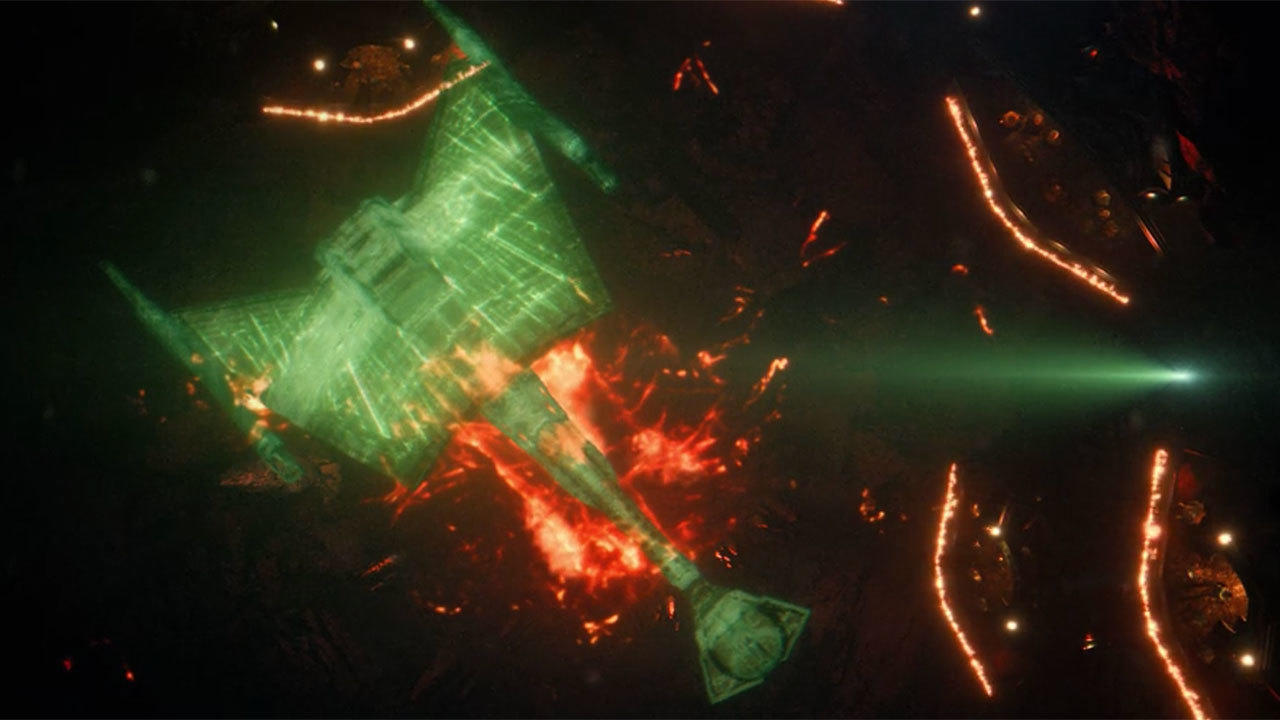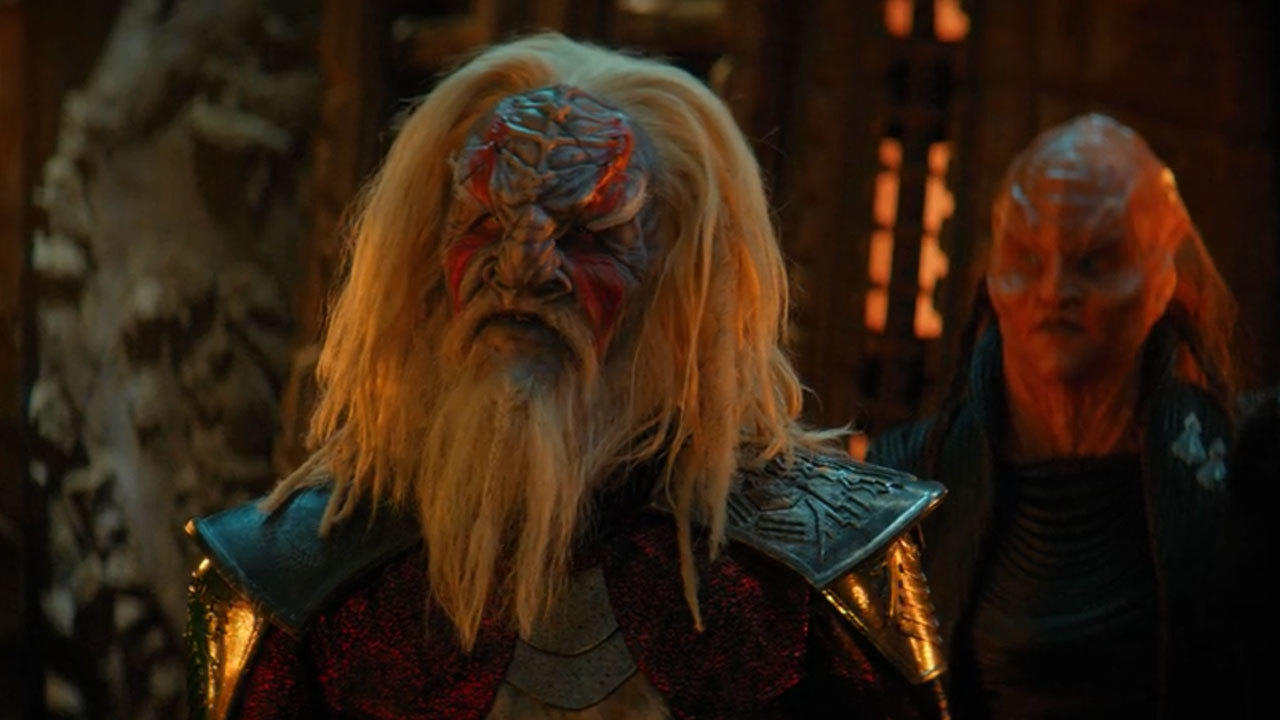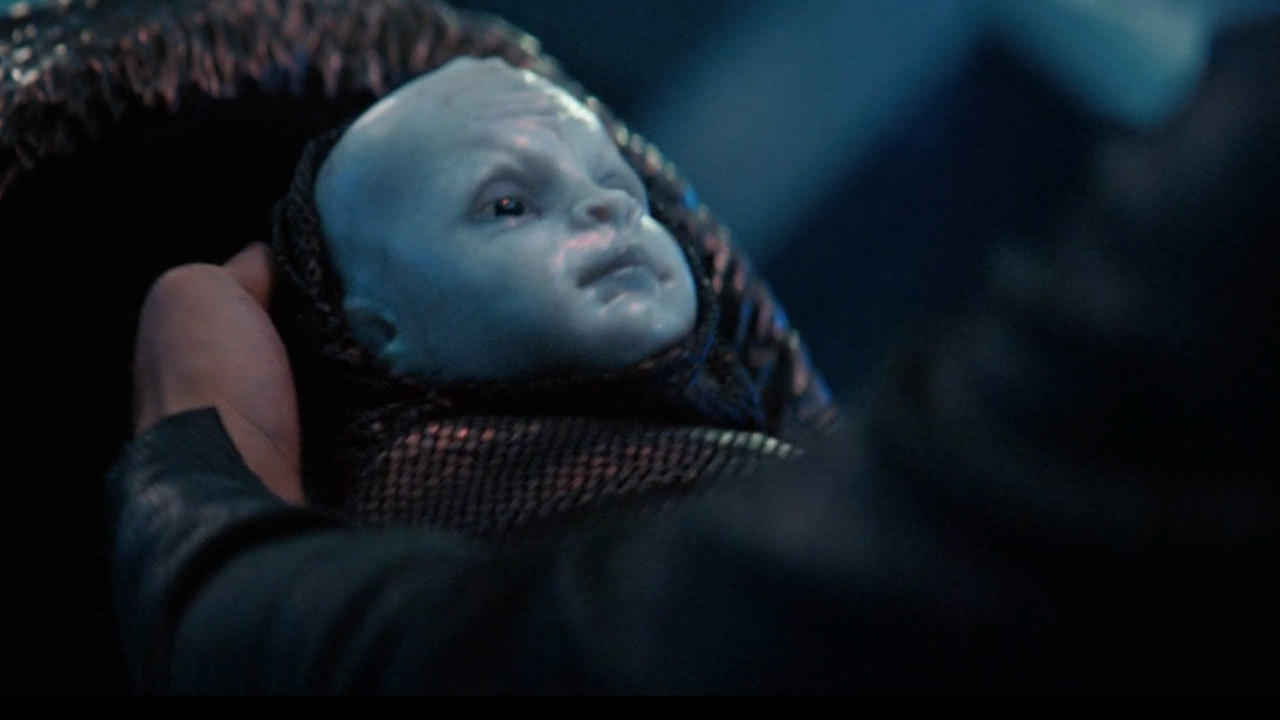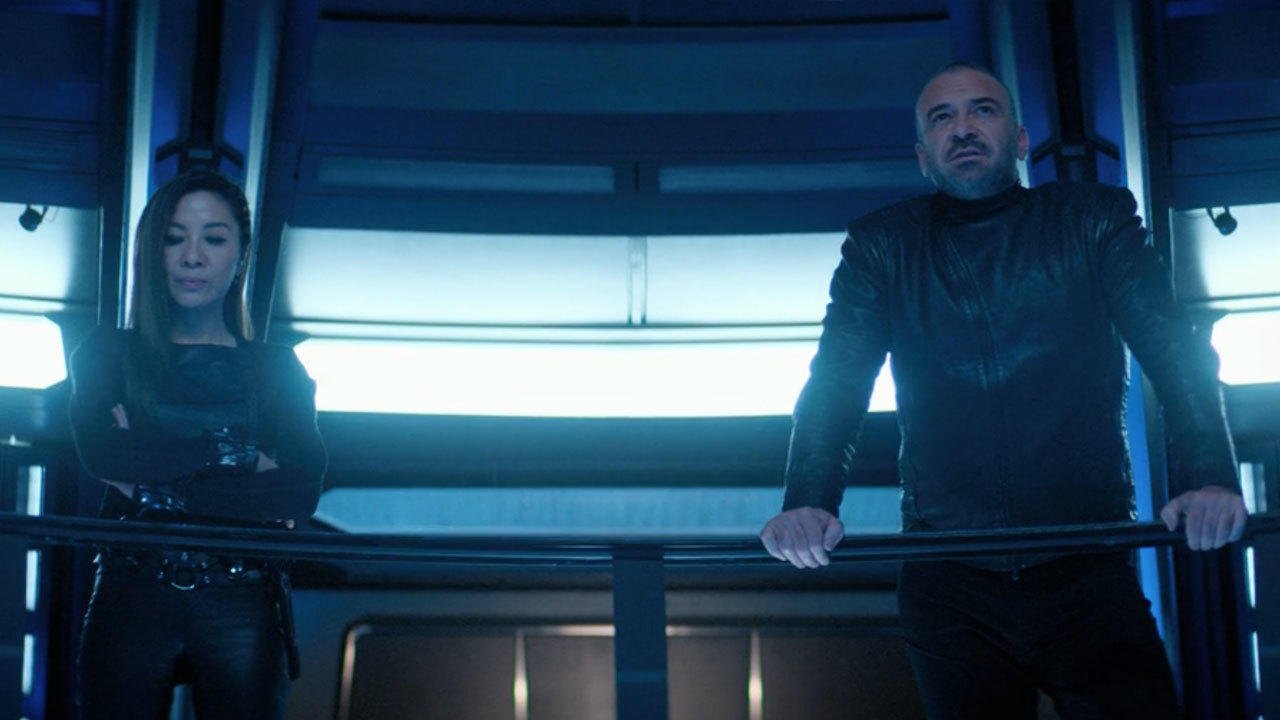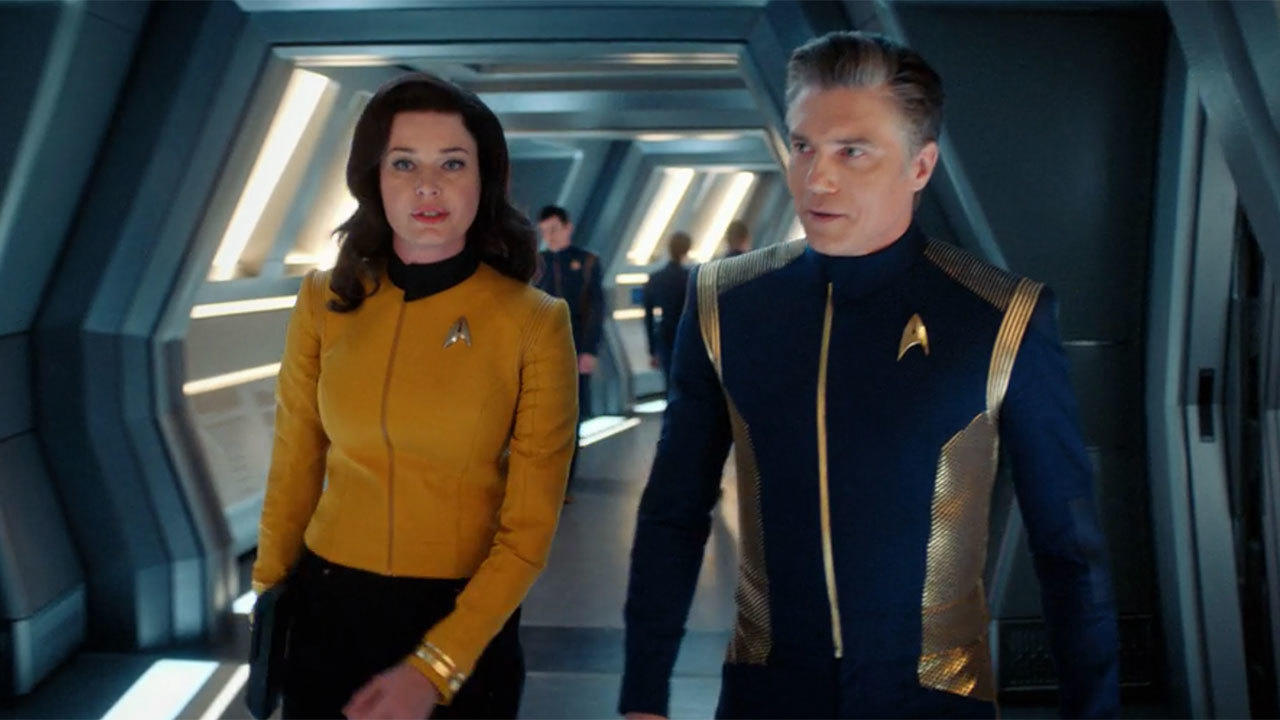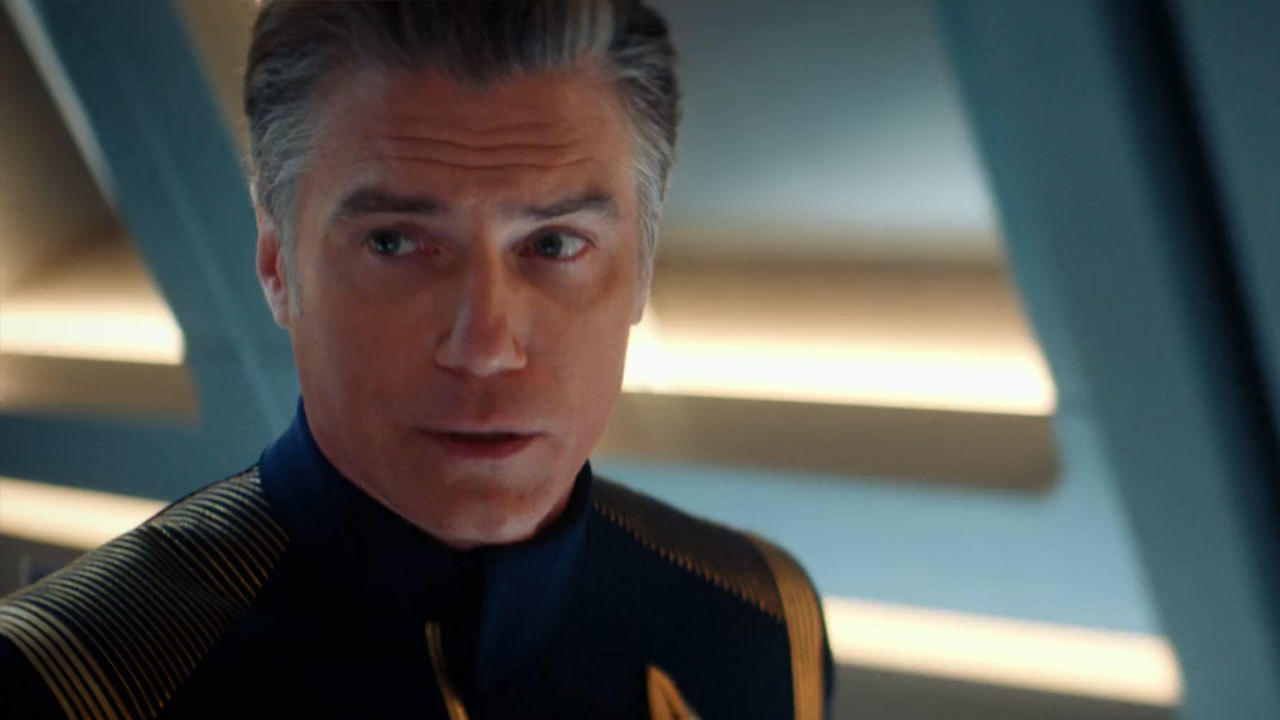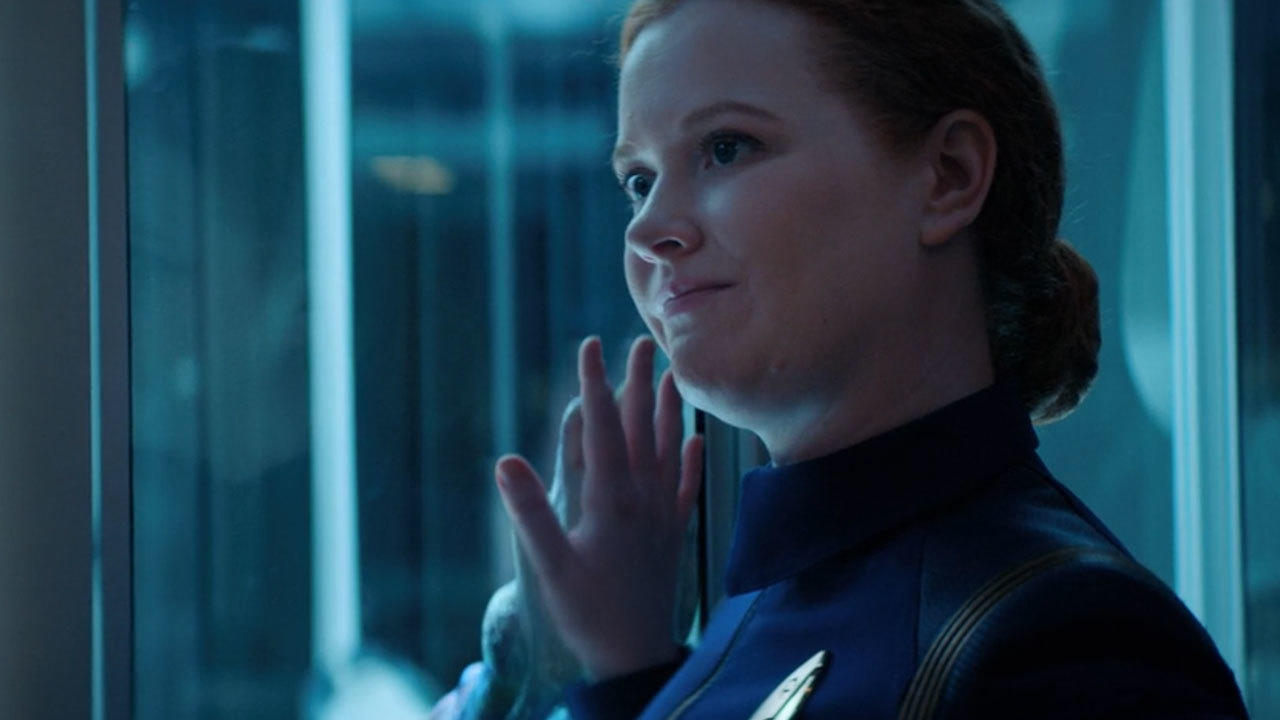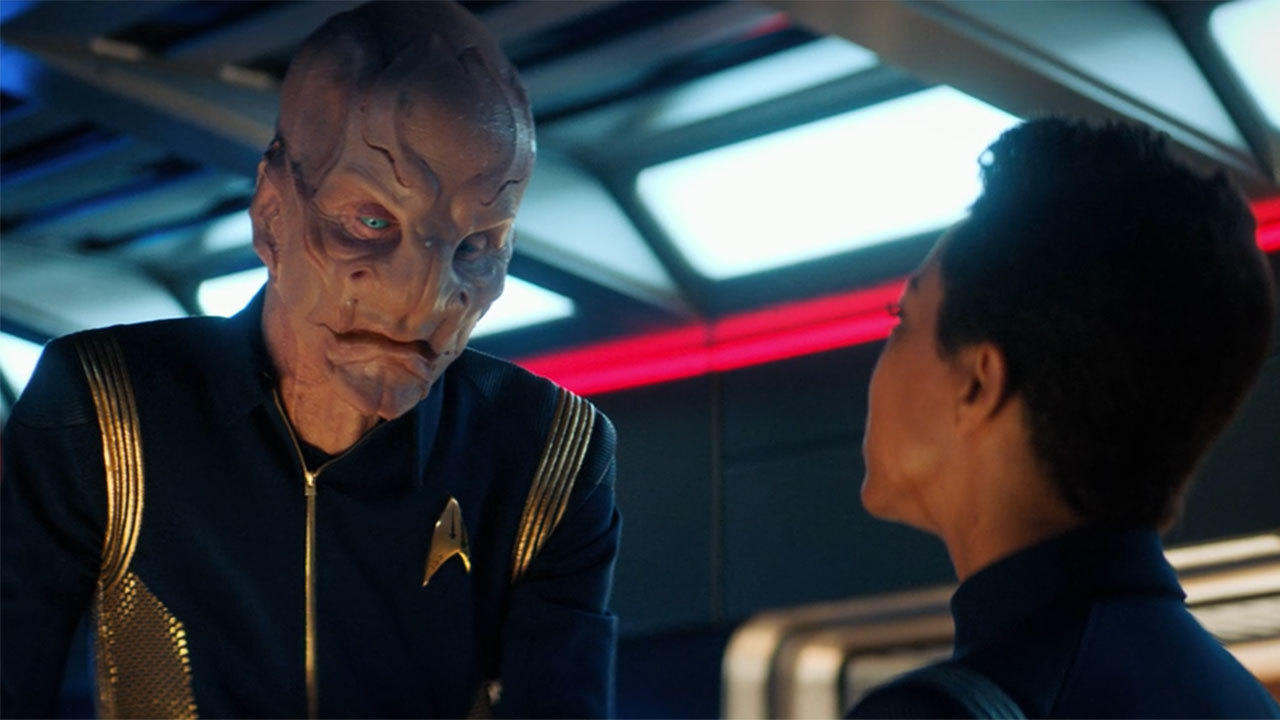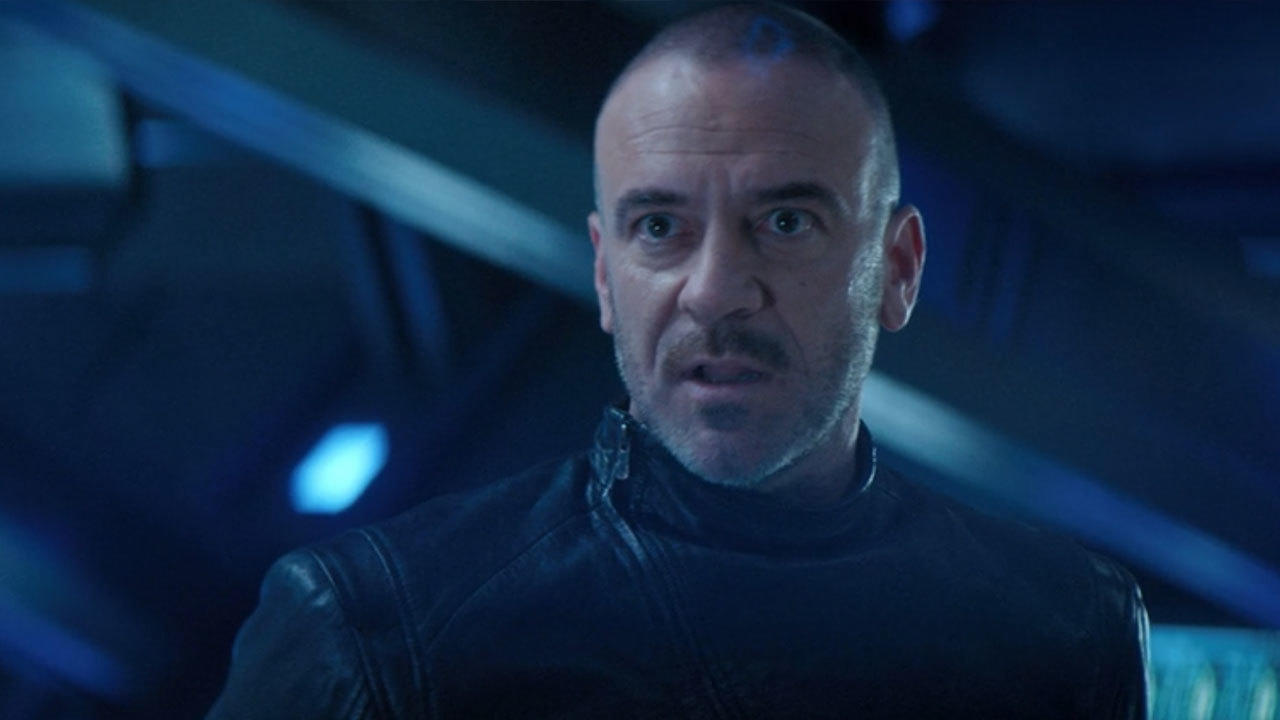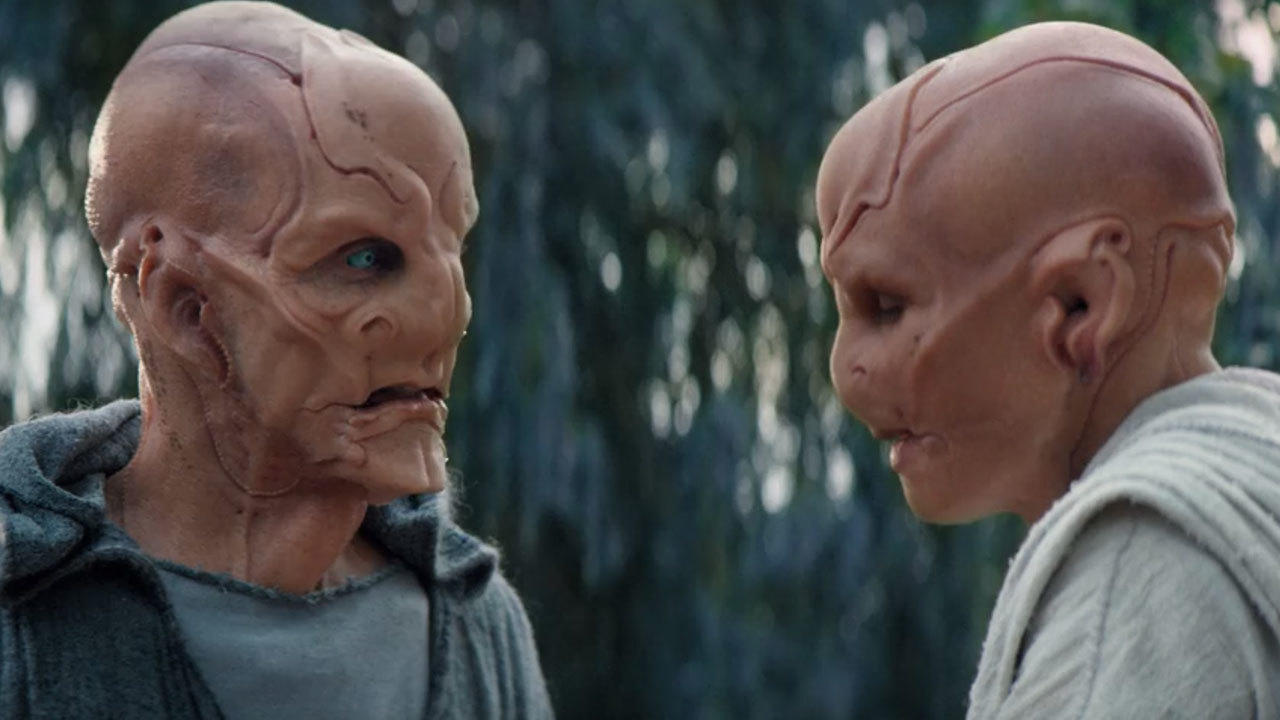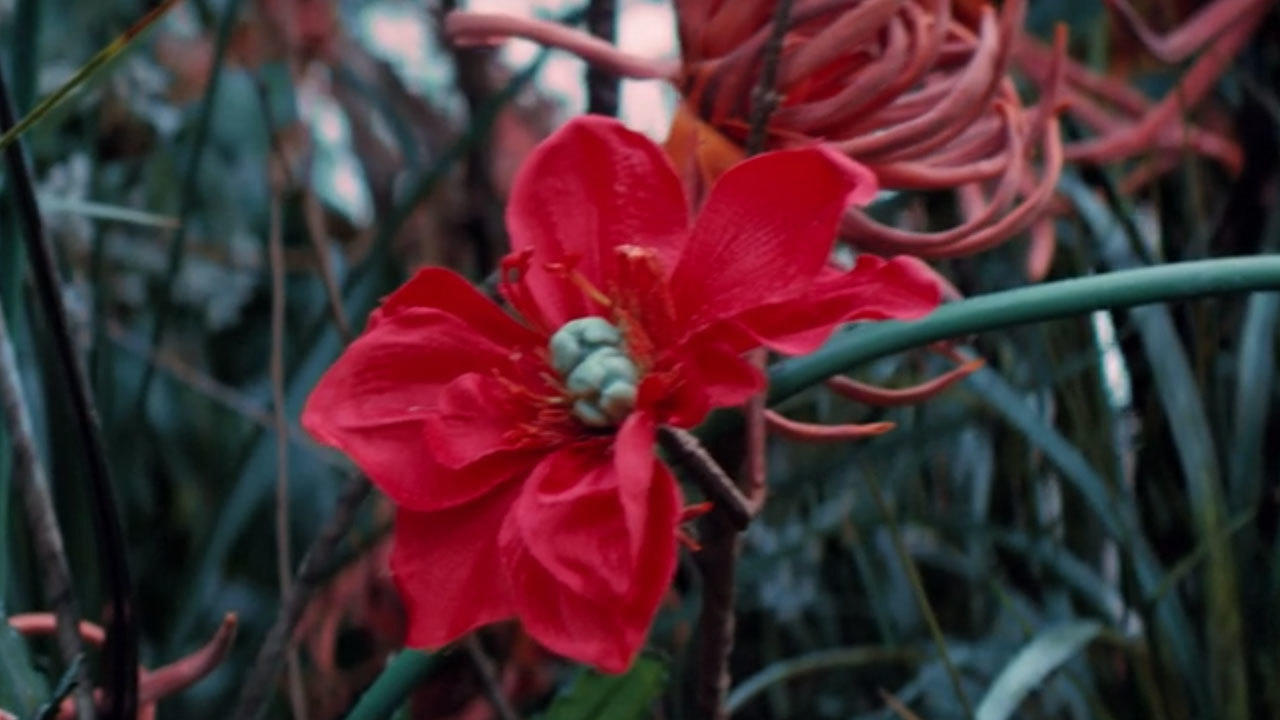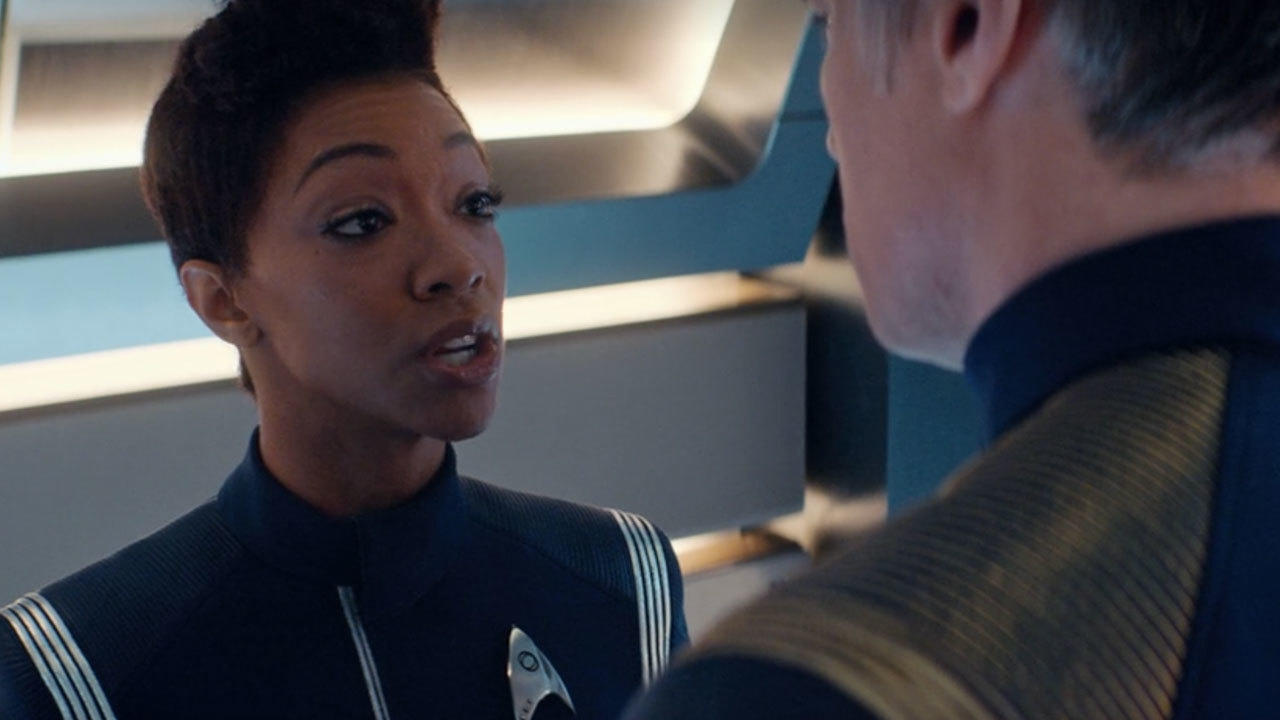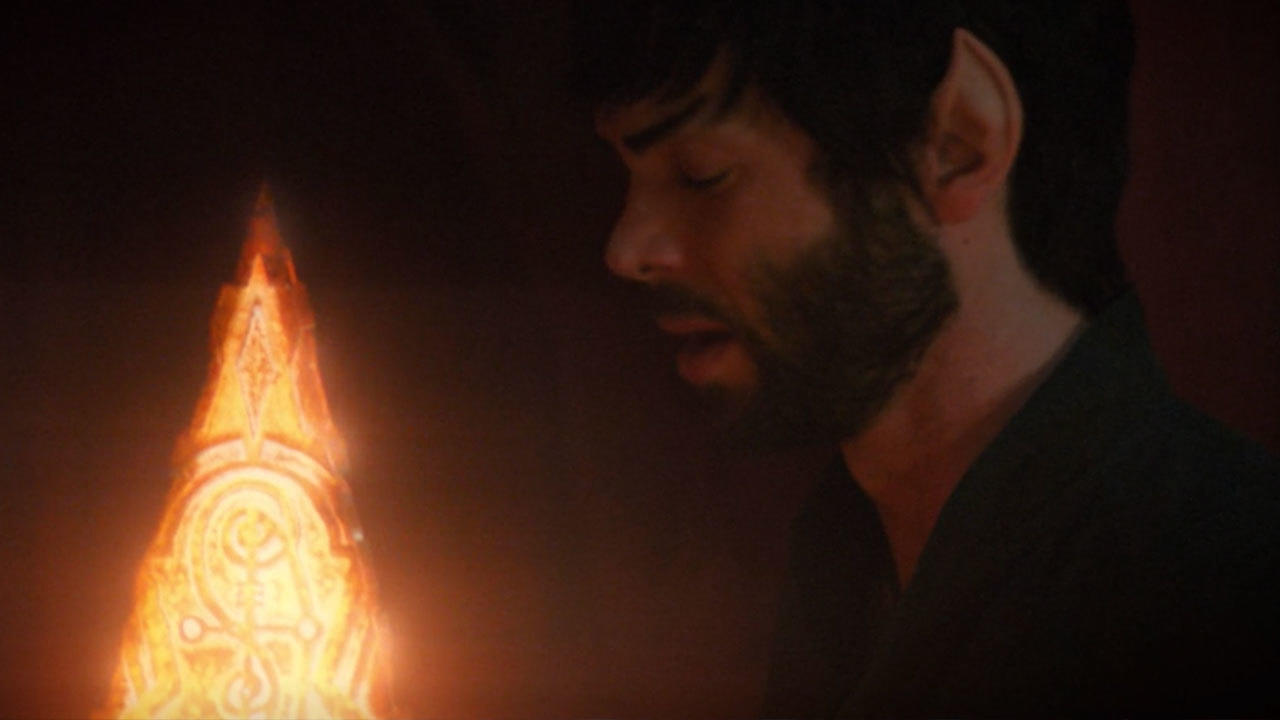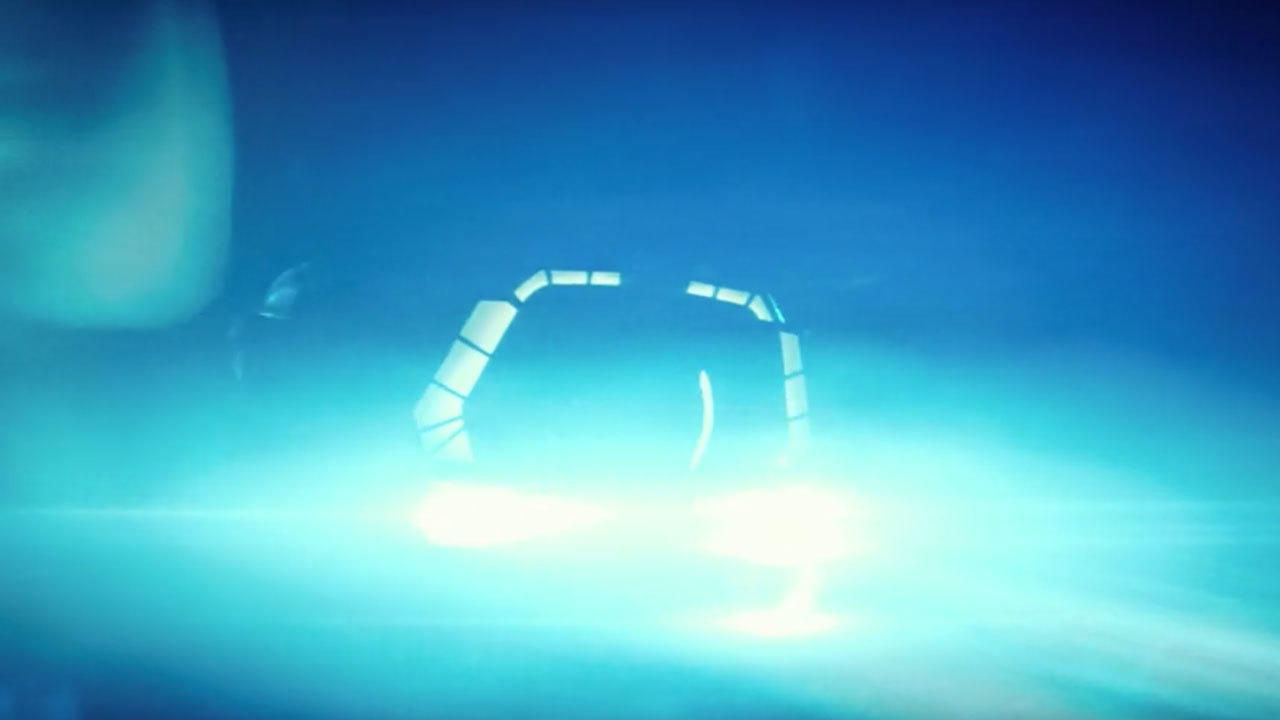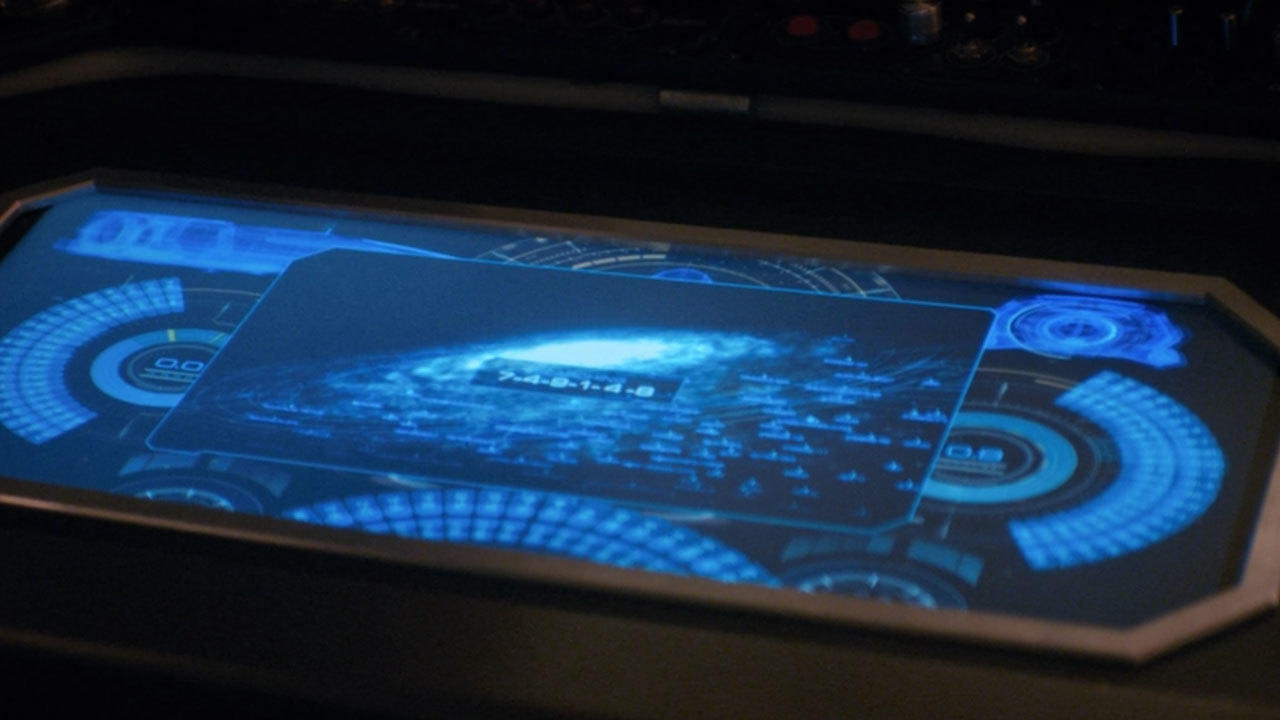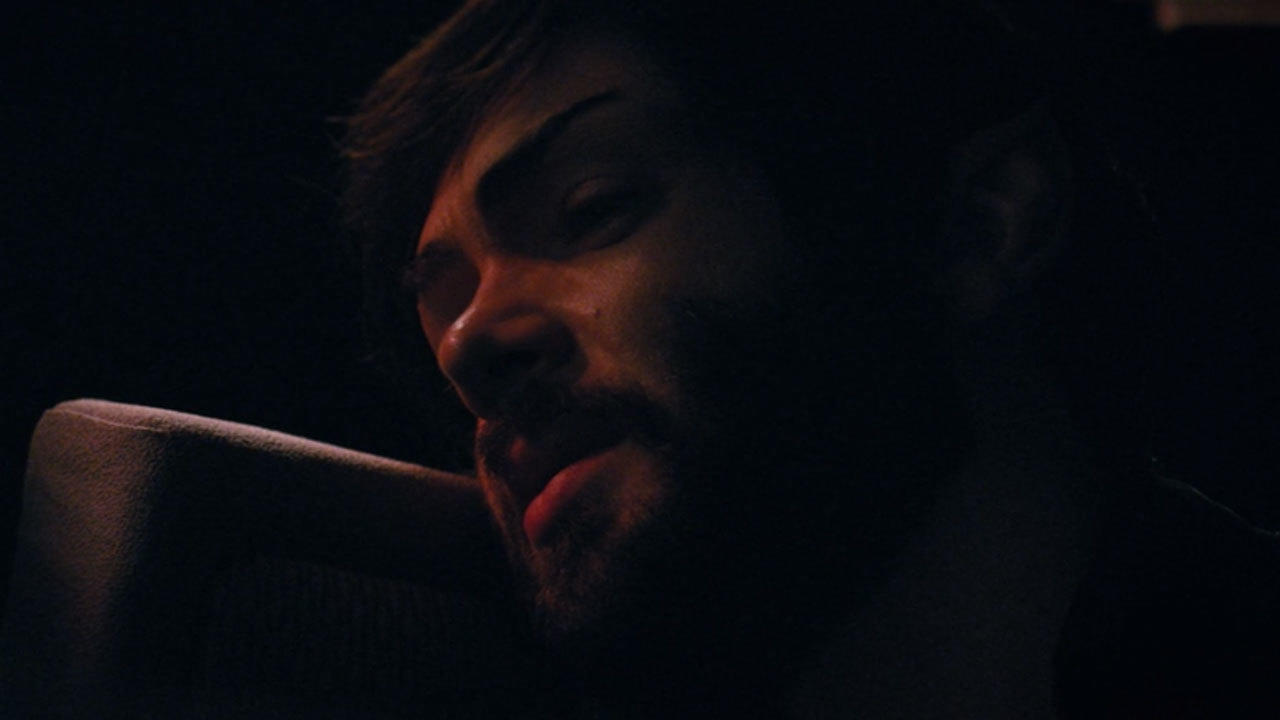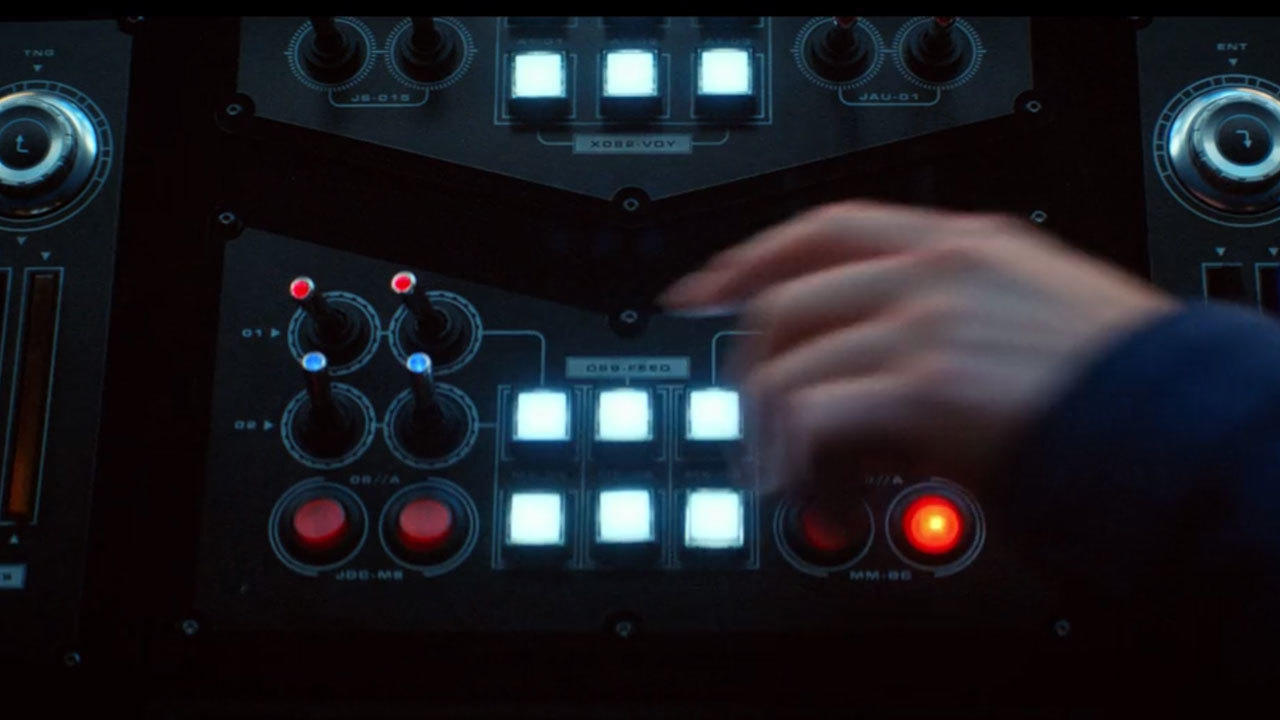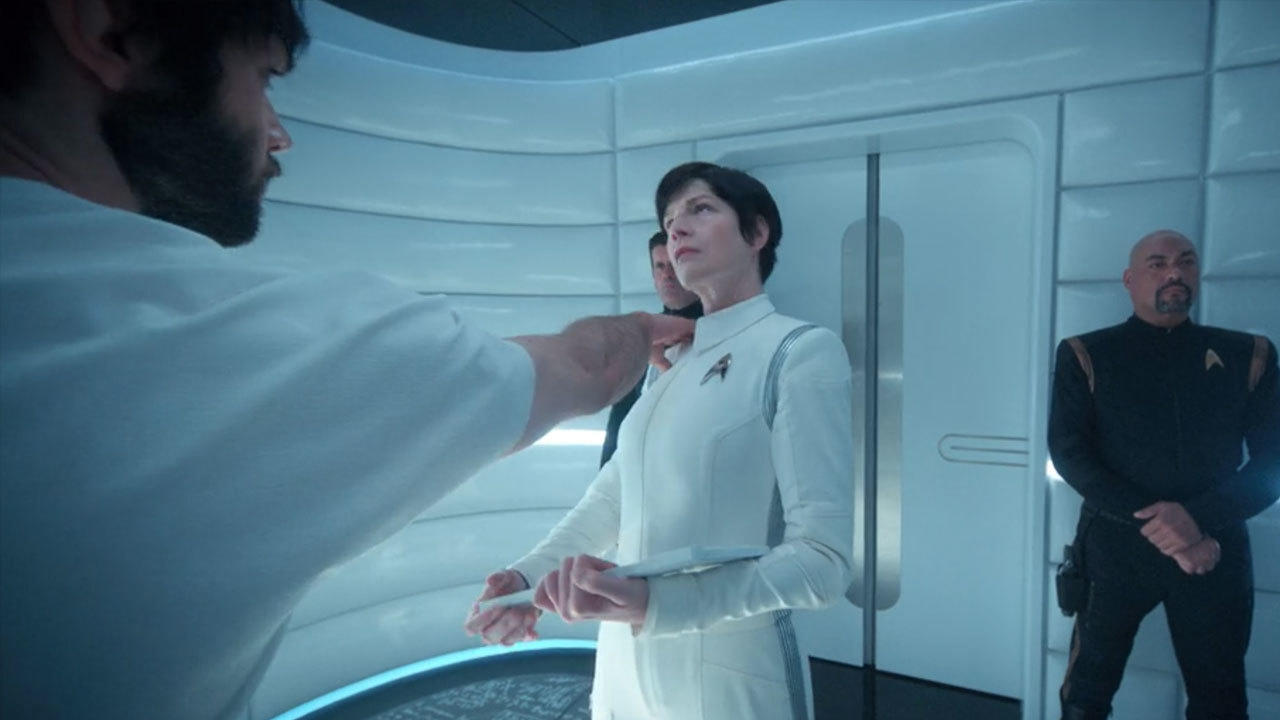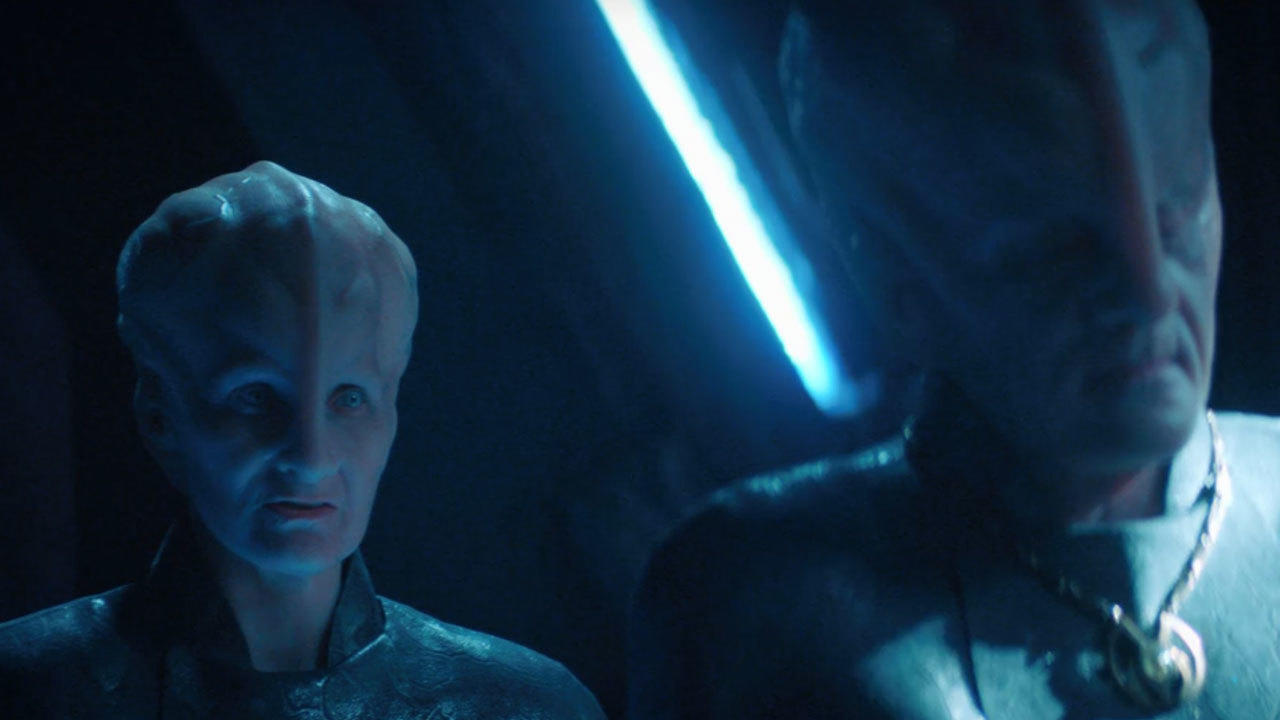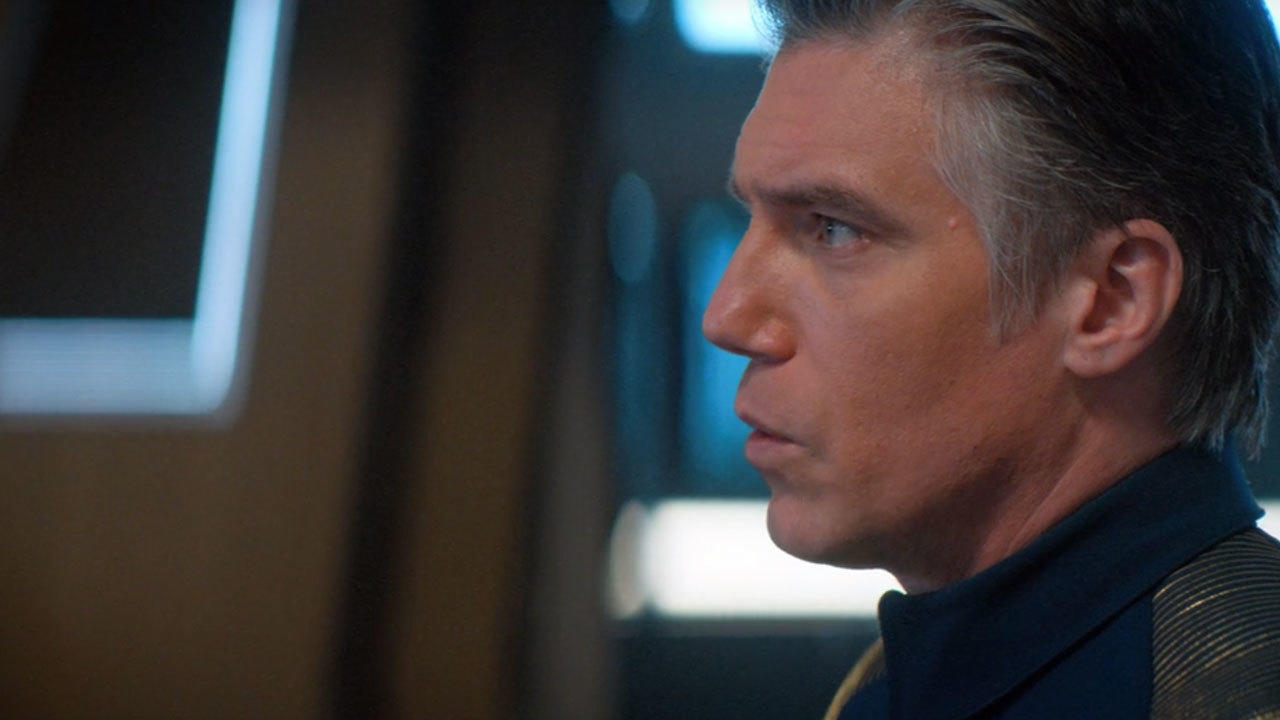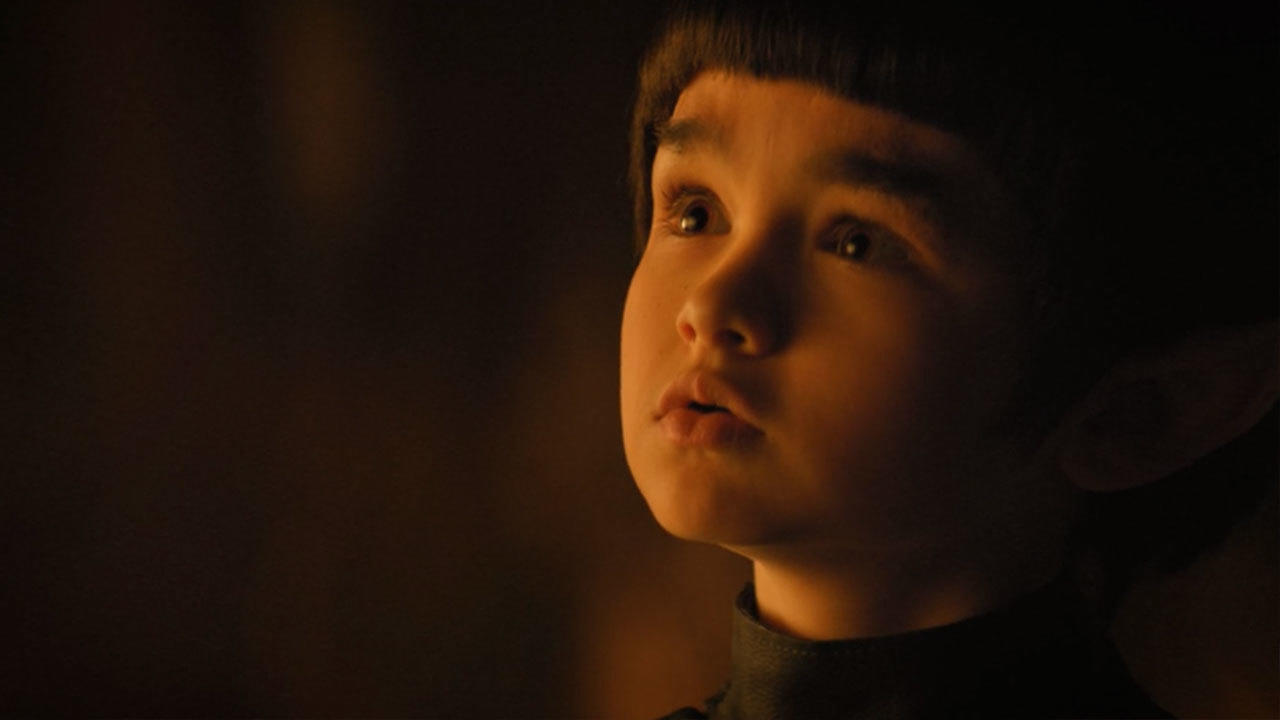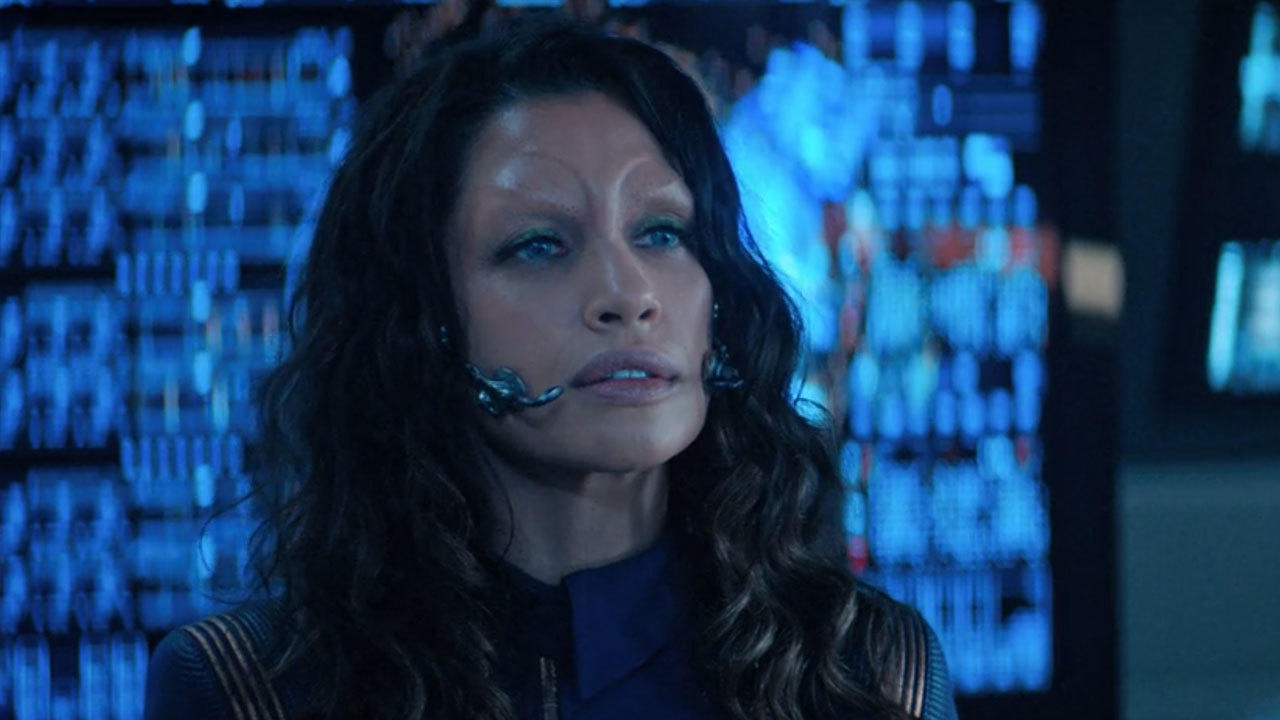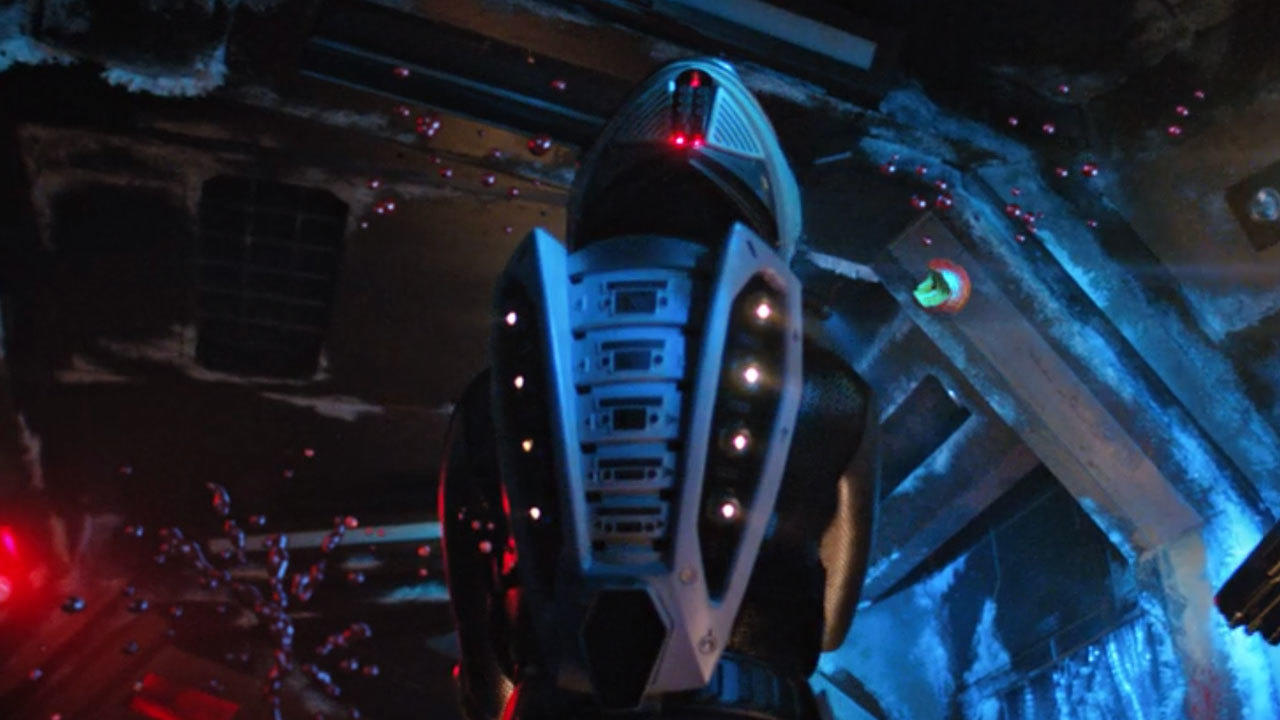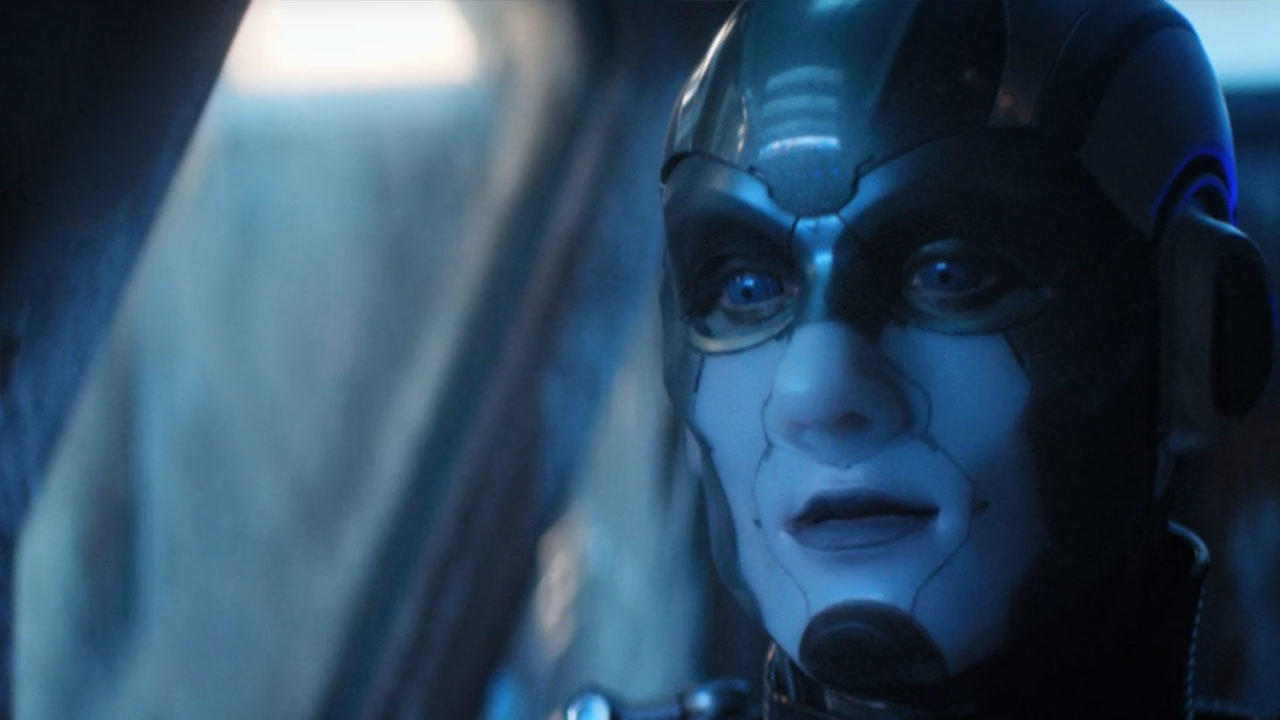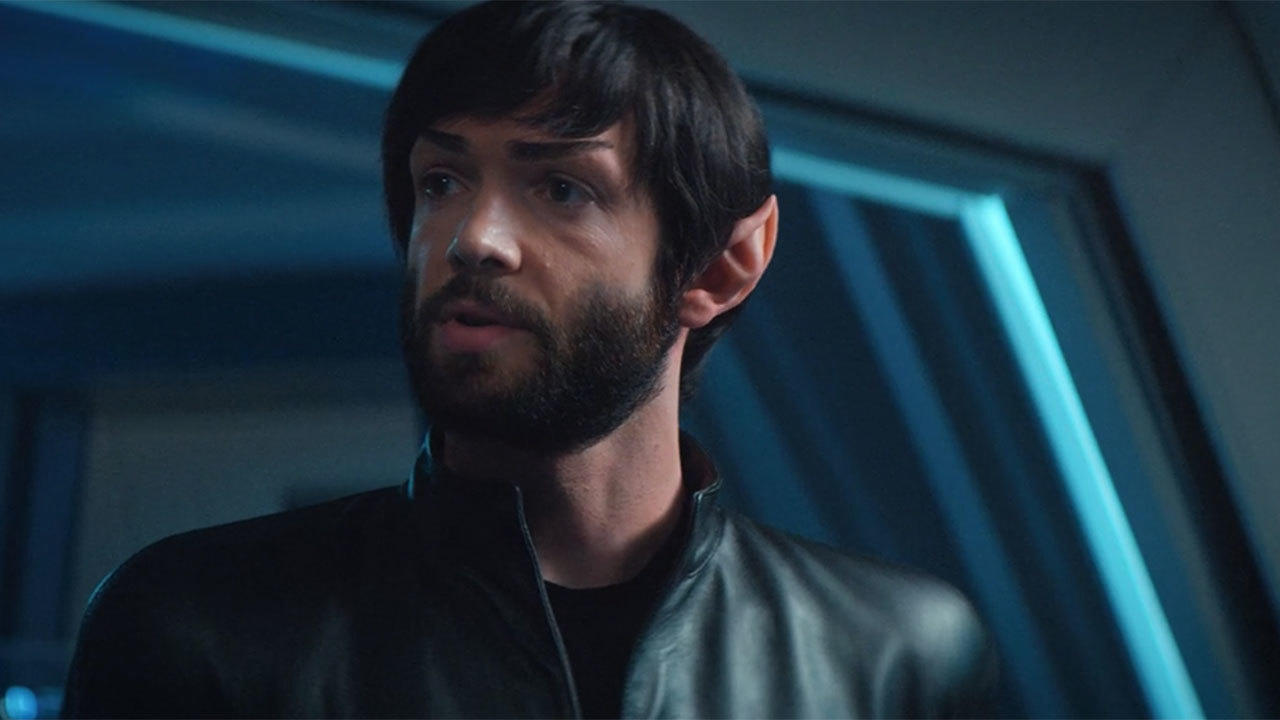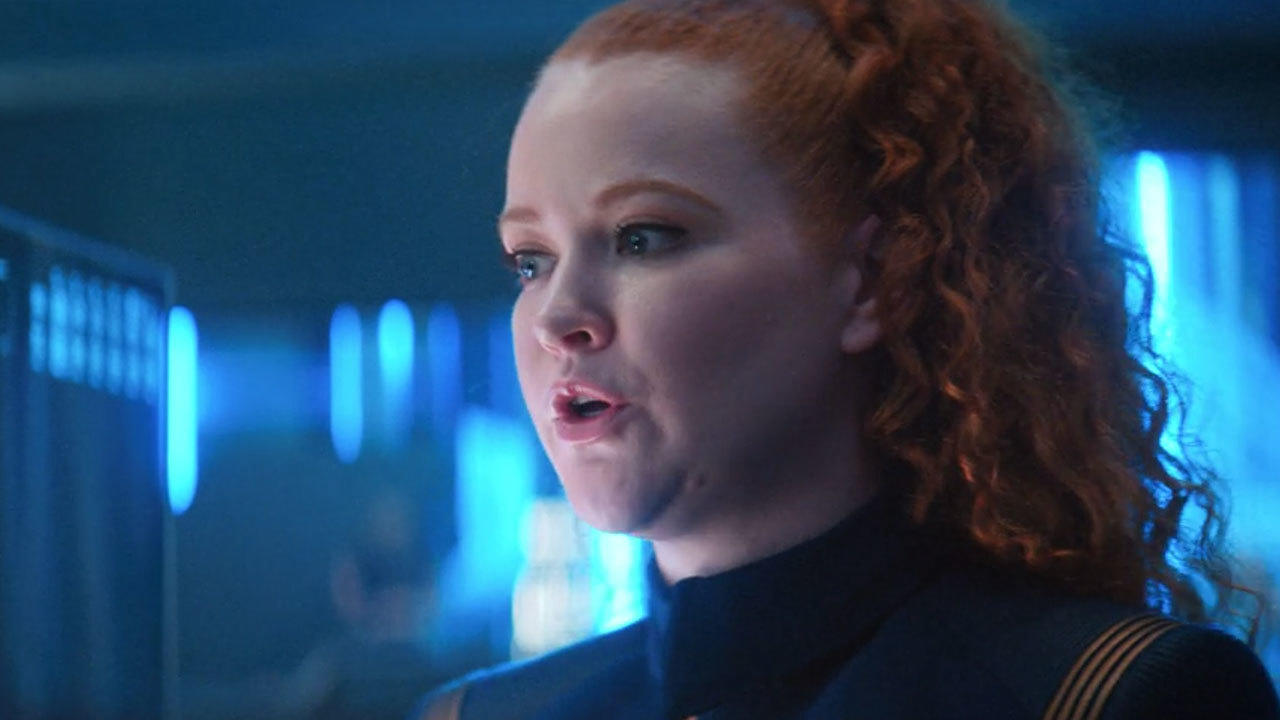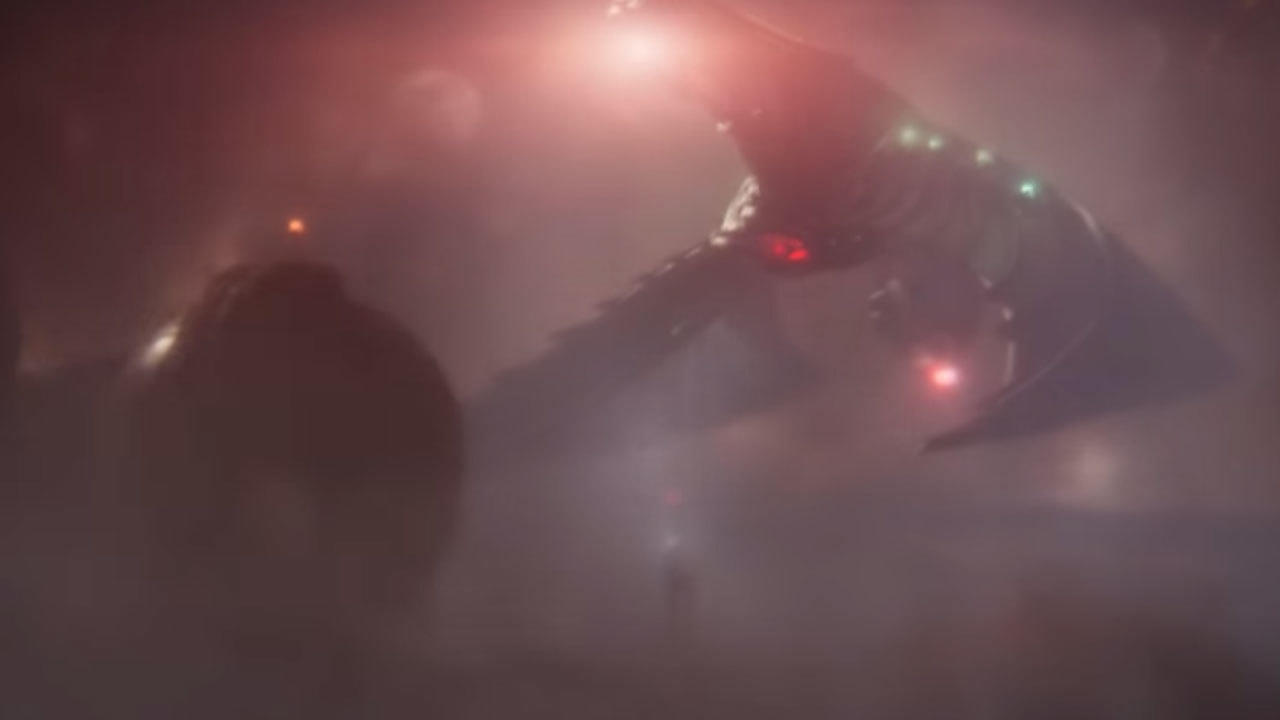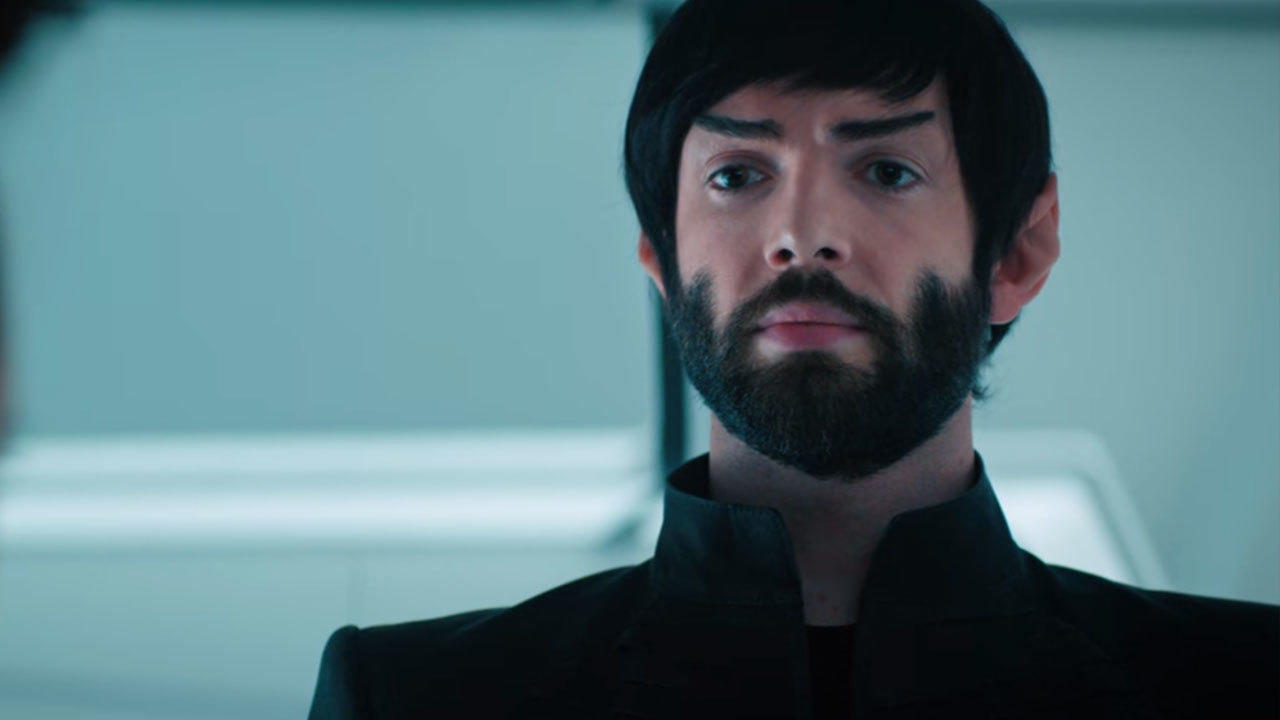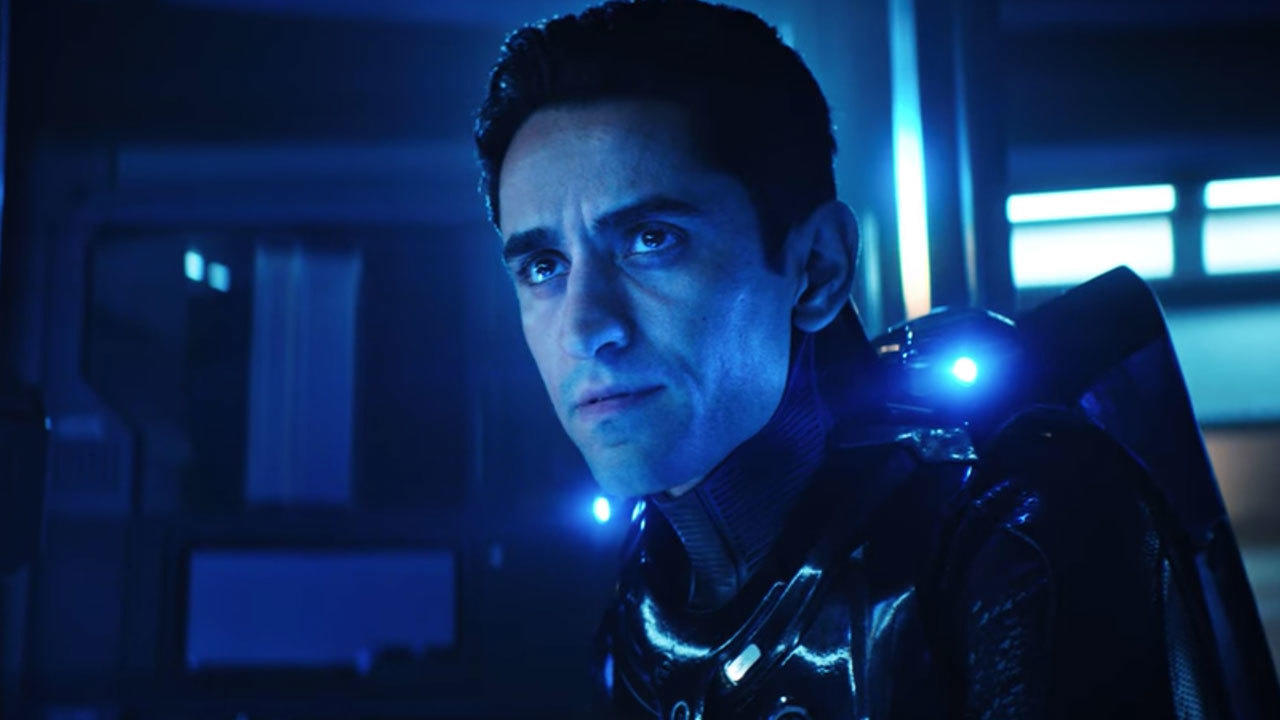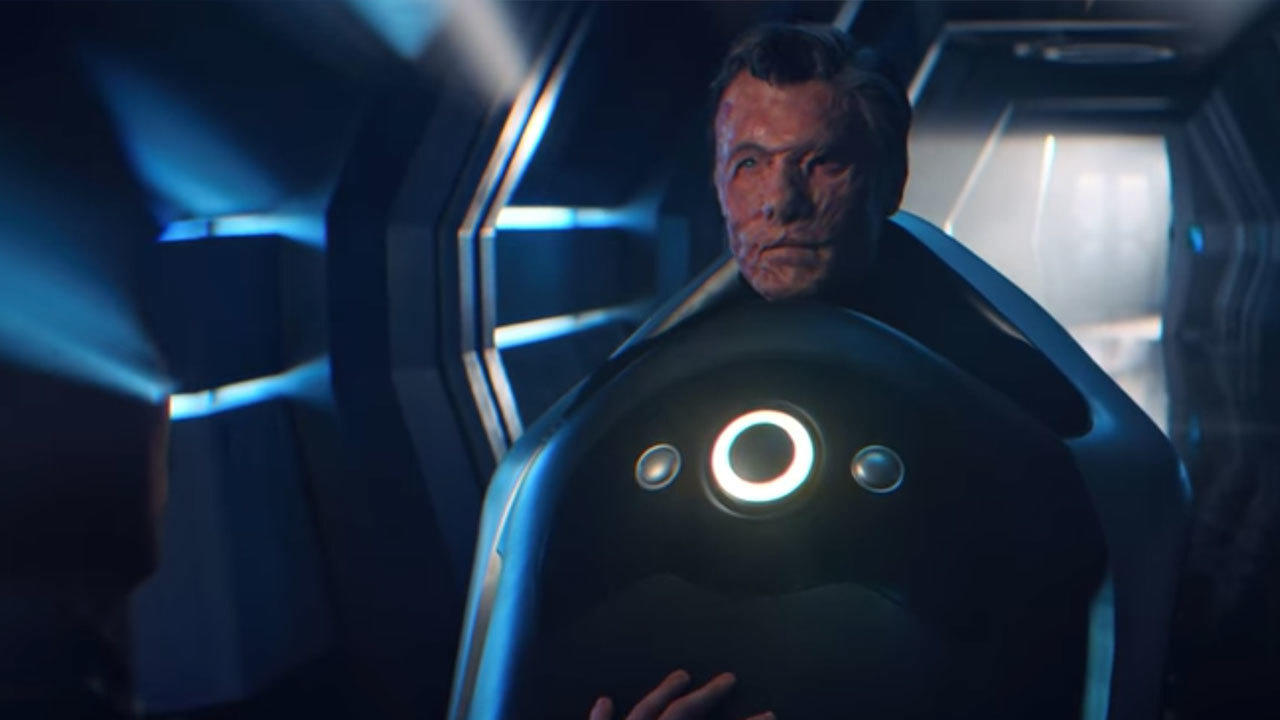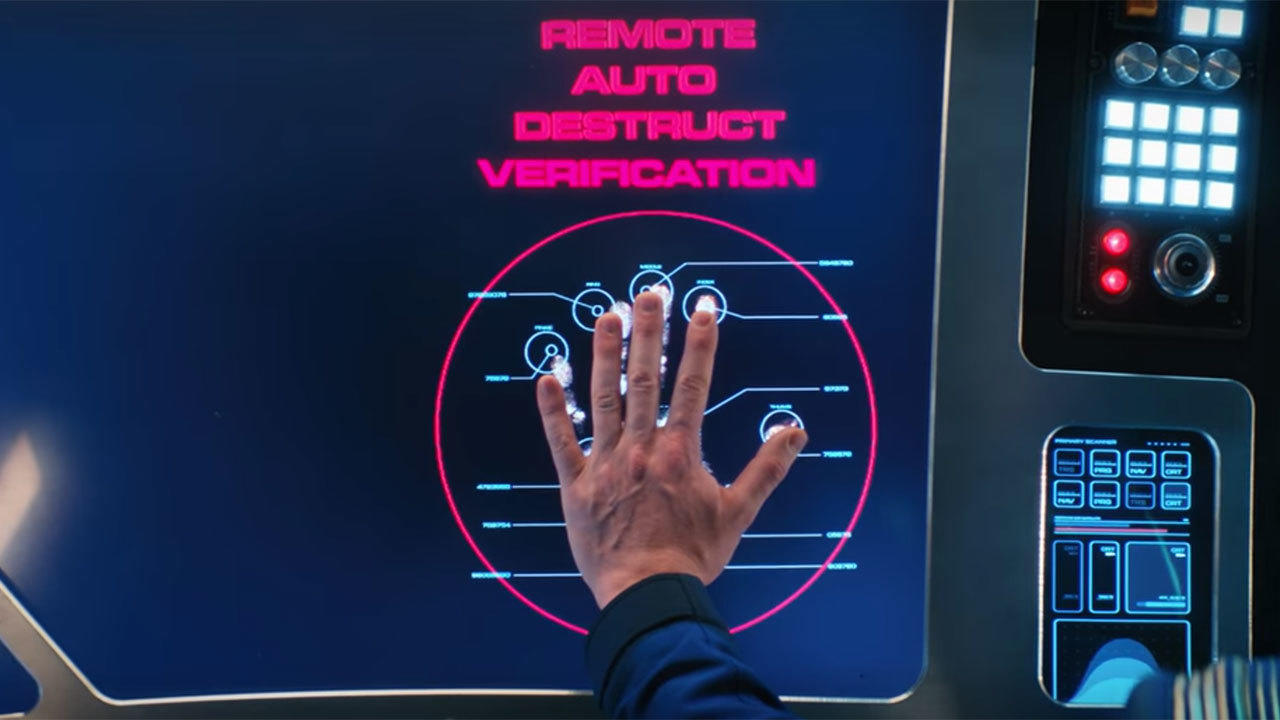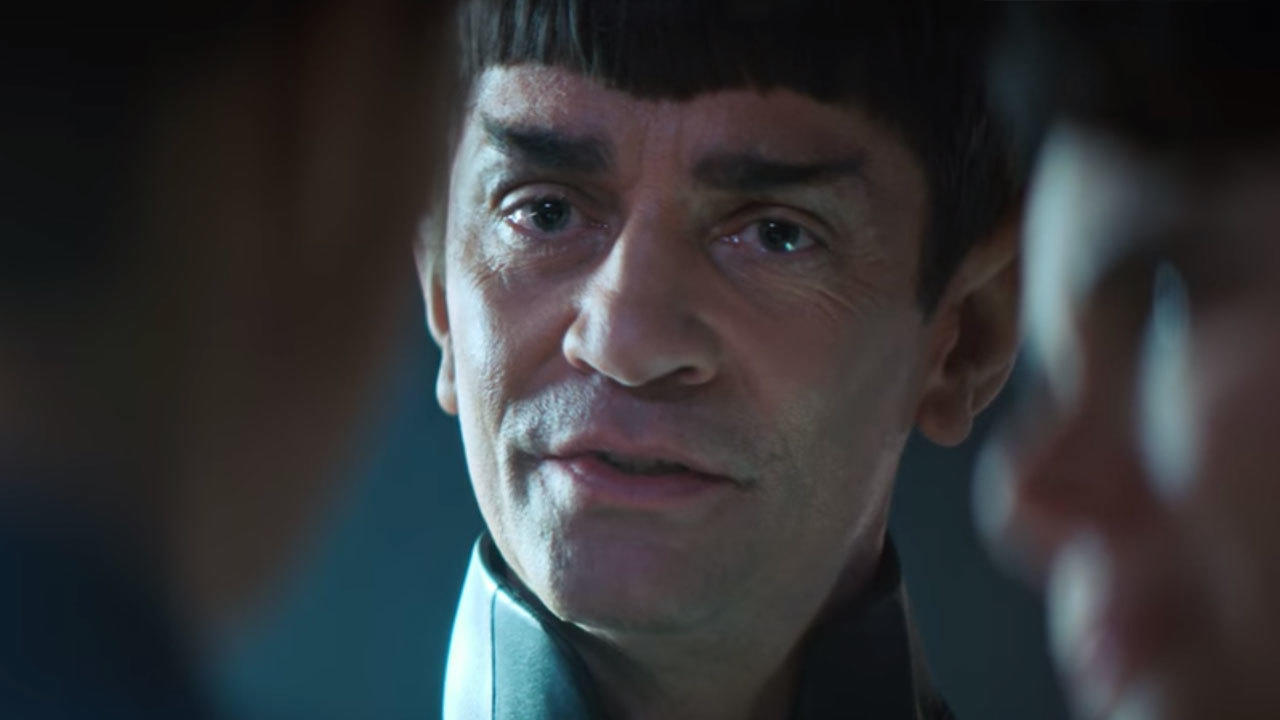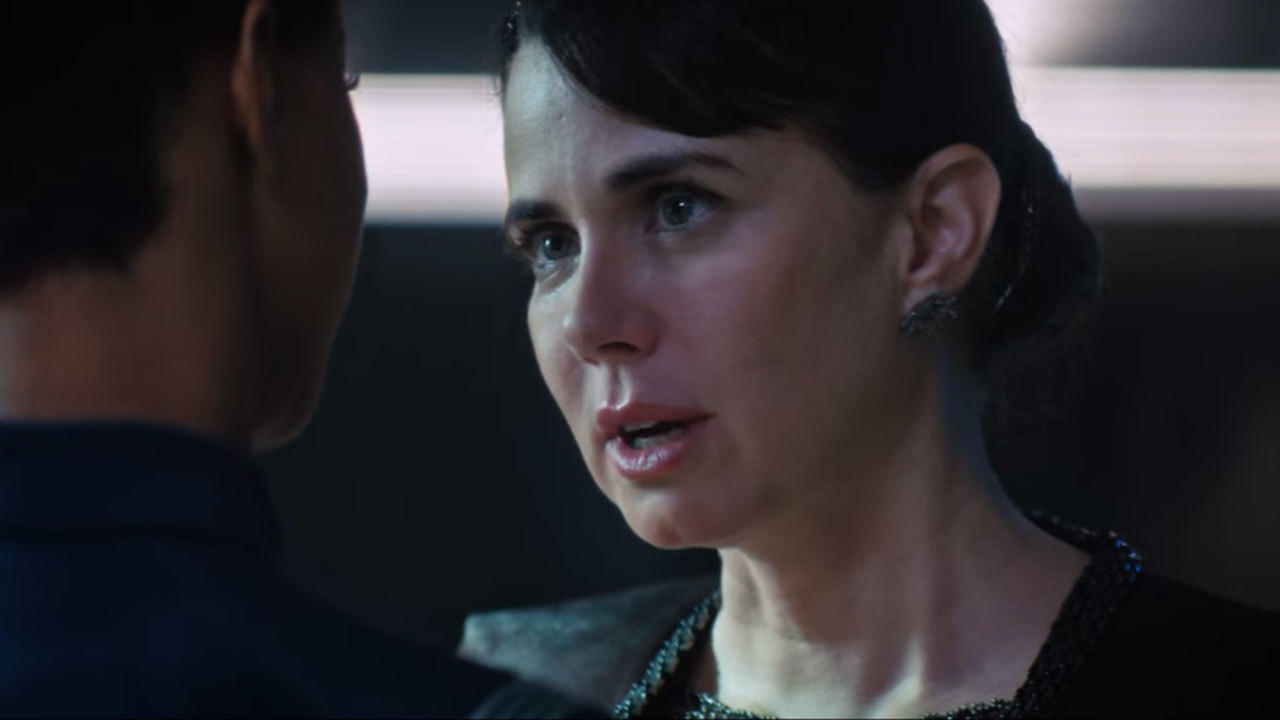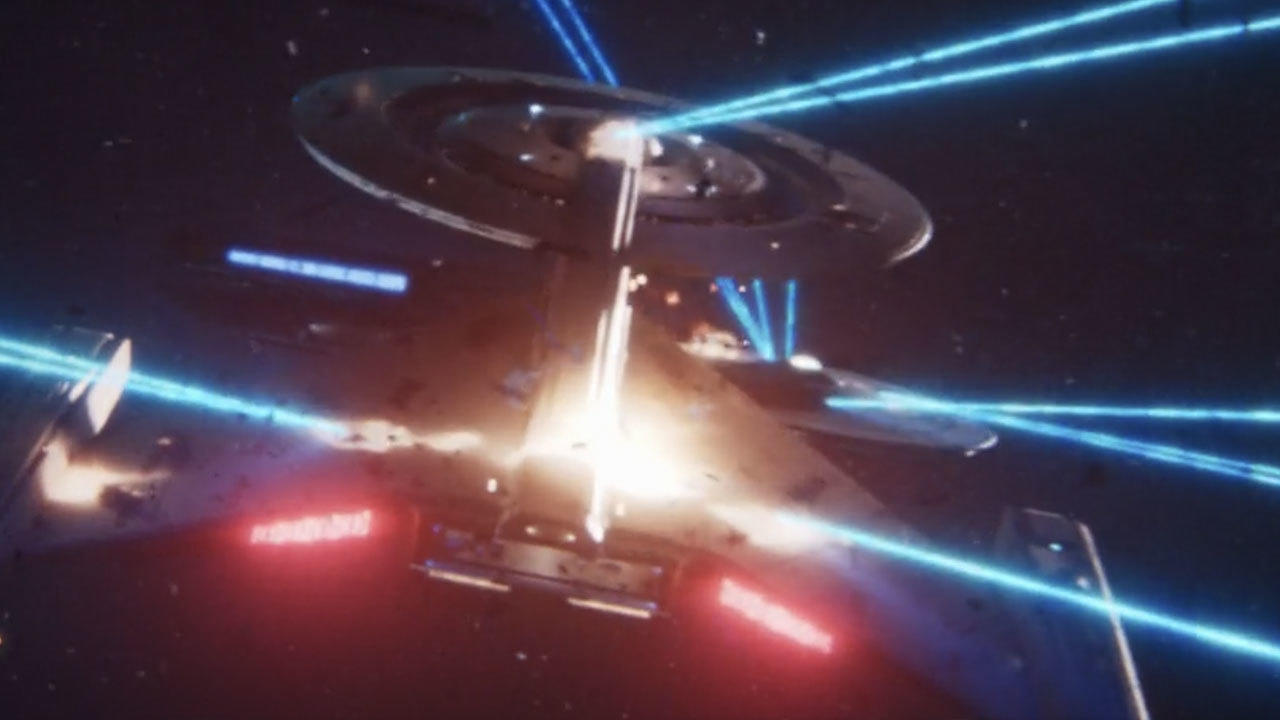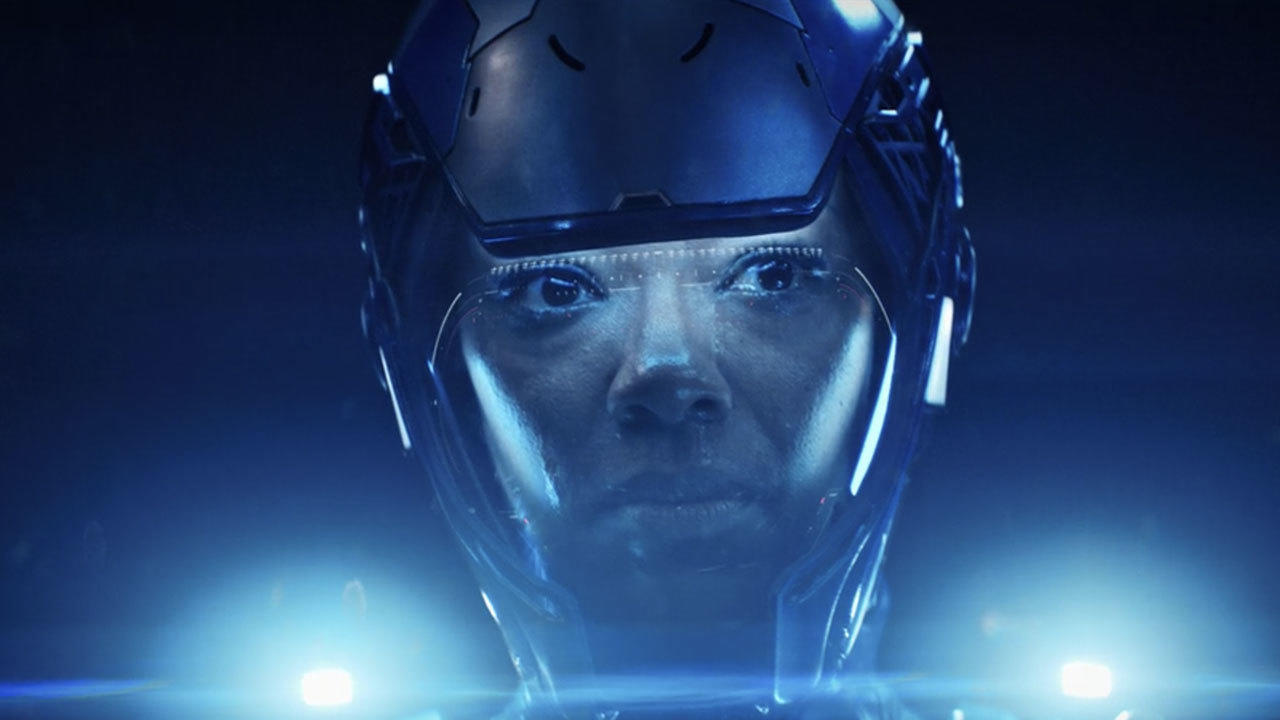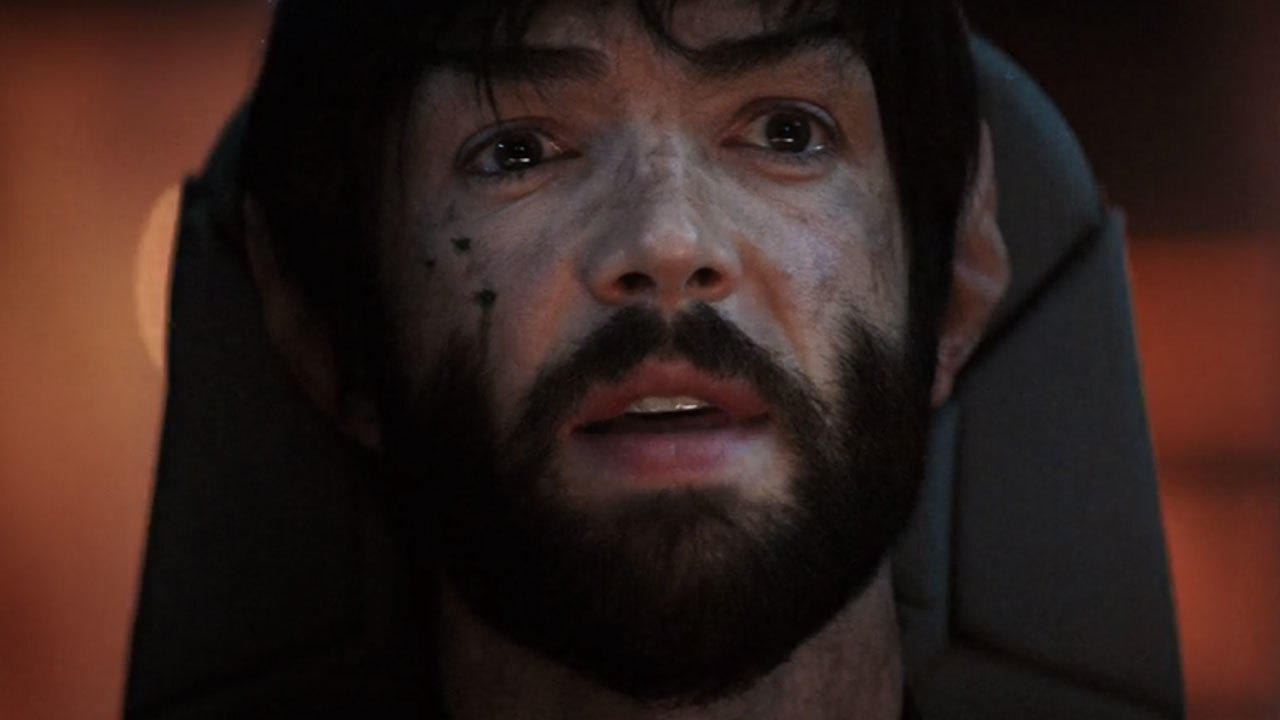Star Trek Discovery Season 2: All The Easter Eggs
GameSpot may receive revenue from affiliate and advertising partnerships for sharing this content and from purchases through links.
While Star Trek found a new lease of life on the big screen in 2009, it had been more than a decade since the last TV show in the long-running sci-fi franchise when Star Trek: Discovery premiered in September 2017. The show's producers faced the difficult task of making a show that appealed to modern audiences and new fans, as well as satisfying die-hard, long-term Trek devotees.
However, while the first season of Discovery took the story and characters in some surprising directions, it was also very aware of its past. Every episode contained multiple references and callbacks to something from the grand 54-year history of Star Trek, which you can check out in our Season 1 Easter Eggs gallery. Sometimes these were sly jokes that only the most dedicated fan would spot, and sometimes they were crucial plot-points.
Season 2 has now finished, and the Easter Eggs, callbacks, in-jokes and references came thick and fast; after all, the season starts with an encounter with the Enterprise and the introduction of Captain Pike, a character who featured in the first episode of the original series, and Spock was a major part in this story. So let's take a look at all the Discovery Season 2 Easter Eggs...
1. Three-Dimensional Chess (Episode 1)
A three-dimensional chess set can be seen in young Spock's room. This is a popular pastime in Star Trek; Kirk and Spock liked to relax with the game in the original series, while a group of genetically-enhanced children can be seen playing it in the Next Generation episode "Unnatural Selection."
2. Priority One (Episode 1)
The Discovery is summoned to the Enterprise via a Priority One distress call. As the name suggests, this call is the highest level of communication within Starfleet. It was first used in the original series episode "One of Our Planets Is Missing" and has been used throughout the franchise.
3. VISOR (Episode 1)
A member of the Discovery crew can be seen this device, worn most famously by Lieutenant Commander Geordi La Forge in The Next Generation. The acronym stands for Visual Instrument and Sensory Organ Replacement, and it detects electromagnetic signals, allowing those with impaired sight to interact with the world around them.
4. Officer Linus (Episode 1)
We met a new member of the Discovery crew--an officer named Linus. Linus is a Saurian, a species which also appeared in Star Trek: The Motion Picture.
5. Transfer of Command code (Episode 1)
Saru quickly shuts down Pike's request for the ship's command codes. This is the use of an authorization code to transfer command of a starship from one captain to another, as seen in the Next Generation two-parter "Chain of Command."
6. Siranna (Episode 1)
Saru mentions that he has an estranged relationship with his sister Siranna. This character appears in a Short Treks episode, which was released on CBS All Access in December, where it is revealed that part of Saru's Star Fleet recruitment requirement was never returning home.
7. Pike's Resume (Episode 1)
Pike brings up a screen filled with his history and achievements, which is loaded with Easter eggs for eagle-eyed viewers. These include a reference to Robert April, the first Enterprise captain who was previously mentioned in the '60s Star trek animated series as well as Season 1 episode of Discovery. We also learned that Pike has served on other starships, including USS Antares, which was previously mentioned in the original series. In addition, Pike has won various prestigious Starfleet awards, such as the Rigel Cup (mentioned in Next Generation episode "The First Duty") and Okuda Award (The Next Generation's "Eye of the Beholder")
8. Mojave (Episode 1)
Pike makes reference to his hometown of Mojave, which he also mentioned in The Cage, the original series' pilot episode in which he was the main character.
9. Redshirt (Episode 1)
Amusingly, Pike tells annoying science officer Connolly to get his "red shirt into an AV suit." As Trek fans know, a redshirt is the term used for any newly-introduced crew member who will shortly die on a dangerous mission. A few minutes later, Connolly is smashed into a space by a flying asteroid.
10. Bolian (Episode 1)
Jett Reno, the science officer rescued from the crashed UUS Hiawatha, explains how she attached one of her injured crew members to a "dead Bolian" to keep his heart working. Bolians are bald, blue-skinned humanoid aliens that appeared in Deep Space 9, Voyager, and The Next Generation.
11. Tellarite (Episode 1)
Another of Reno's injured crew members is a Tellarite called Greg. Rather gruesomely, "Greg's head wound keeps opening up." Tellarites are a snout-nosed race that have appeared in every Star Trek series to date, as well as the movies The Voyage Home and The Undiscovered Country.
12. The Cage (Episode 1)
Towards the end of Episode 1, Pike is seen reading one of the fortune cookie messages left behind behind by his predecessor Lorca. It reads: "Not every cage is a prison, not every loss eternal," another possible reference to that pilot episode.
13. Vulcan Bells (Episode 1)
The episode ends with a scene in Spock's room on the Enterprise, where we can see Vulcan Bells. These previously appeared in the original series episode "Amok Time."
14. World War 3 (Episode 2)
The arrival of humans on New Eden coincided with World War 3 on Earth, which according to Star Trek history, ran from 2026 the year 2053. The devastating conflict caused the loss of 600 million lives and was first mentioned in the original series episodes "Bread and Circuses" and "The Savage Curtain." It was later referenced in the Enterprise episodes "In a Mirror, Darkly, Part II" and "Demons."
15. General Order 1 (Episode 2)
Also known as the Prime Directive, this is the Federation’s most famous and important rule--the non-interference in the development of other cultures and civilizations. In this episode, Pike, Burnham, and Owosekun must refrain from telling the inhabitants of New Eden that Earth survived the war. However, Pike ultimately breaks the Order in order to secure the ancient camera that might hold clues about the Red Angel.
16. Musk Junior High (Episode 2)
When Tilly is looking back through her school records, we see that she attended Musk Junior High in 2247. The legacy of controversial SpaceX and Tesla founder Elon Musk will clearly stretch far into the future. (This is actually Musk’s second reference in Discovery too, following a mention by Lorca in Season 1.)
17. D7 Battlecruiser (Episode 3)
The legendary warship can be seen as a prototype hologram during the scenes with the Klingon council. L'Rell explains that it is being built as a symbol of Klingon unity and will bear no individual house insignia. The D7 was the first Klingon ship design seen on Star Trek, in the original series episode "Elaan of Troyius," and subsequently appearing across the whole franchise.
18. Klingon Hair (Episode 3)
One of the more controversial aspects of Discovery Season 1 was the decision to make the Klingons hairless, as previous Star Trek series and movies had usually featured Klingon warriors with impressive flowing manes. But in Season 2, the hair is coming back, with Burnham telling Tyler "I heard post-war the Klingons are growing their hair again," suggesting that the bald look is part of the Klingon war tradition.
19. Boreth (Episode 3)
Tyler decides to send L'Rell and Voq's son to the planet Boreth, where he will be safely brought up in isolation by Klingon monks in a monastery established by the Followers of Kahless. The monastery later appeared in the Next Generation episode "Rightful Heir," when Worf visits in an attempt to rediscover his Klingon heritage, and in Deep Space 9's "The Way of the Warrior."
20. Section 31 (Episode 3)
This autonomous, covert organization exists to protect threats to the Federation, and in this episode, we learn it has recruited Terran emperor Philippa Georgiou to its ranks. Section 31 was created by Deep Space Nine Showrunner Ira Steven Behr and resulted from his desire to look into the darker aspects of the utopia created by Gene Roddenberry. The organization is also referenced in four episodes of Enterprise and the movie Star Trek: Into Darkness.
21. Number One (Episode 4)
X-Men star Rebecca Romijn appears as Number One, a character who previously appeared the original Star Trek pilot. Back then, Pike's second-in-command on the Enterprise was played by Majel Barrett-Roddenberry, but the character was dropped from the show after a poor response from NBC executives.
22. Scotty! (Episode 4)
Pike tells Number One that he doesn't believe the Enterprise will ever have a "chief engineer more in love with his ship" than Louvier, the current holder of that post. This is, of course, a knowing nod to Mr Scott, who in Star trek chronology will take over the job a decade later and become the ship's most famous and devoted chief engineer.
23. "I never liked the holograms, they look too much like ghosts." (Episode 4)
On the whole, Discovery isn't too worried about making sure the show's technology matches that featured in the original series, which is set a decade later--there are obviously 50 years between the production of the two shows and visually effects have moved on massively. However, this episode does explain why we never see any holograms on the Enterprise in the original series when they are used throughout the Discovery for communications. Pike tells Number One to order Enterprise chief engineer Louvier to "rip out" the holo-tech when it starts malfunctioning and revert to "good old-fashioned view screens."
24. Blob Hands (Episode 4)
The May-blob places its gloopy hand on the glass next to Tilly's. This is presumably a callback to the iconic shot of Spock and Kirk at the end of Wrath of Khan.
25. EPS Grid (Episode 4)
Pike tells Burnham that the mysterious sphere has made the EPS Grid unstable. This is part of a starship's electro-plasma distribution network, which powers the ship and can be shut down in an emergency. It has been mentioned in several episodes of The Next Generation and Voyager.
26. Starbase 7 (Episode 4)
Saru tells Burnham about his experiences on Starbase 7, when he was processed a refugee and how it inspired him to join Starfleet. While this starbase has not been featured on a show or movie before, it does appear in several Star Trek novels, comic books, and role-playing game modules.
27. Impedrizine (Episode 4)
Stamets injects himself and Reno with Impedrizine so that they can "come down" from the hallucinogens released by the spore blob. This drug was previously mentioned in the Voyager episode "Imperfection."
28. Here Today, Gorn Tomorrow (Episode 5)
When Pike meets old friend--and now Section 31 boss--Leland, he tells him, "Last time I heard about you, you were up to your ass in alligators on Cestus III." Cestus III featured in the original series episode "Arena," where Kirk encountered the Gorn, a race of reptilian alligator-like aliens.
29. Let's Twist Again (Episode 5)
Stamets and Burnham describe what will happen if any of the Discovery crew gets too close to the mycelial network--they will get “twisted” by both mycelial and normal space "like the bodies we found on the Glenn." This is a reference to the dead crew members that were found back in Season 1, Episode 3 of Discovery.
30. Deneva (Episode 5)
We learn that a past mission of Leland's involved "the wrong ambassador" on a visit to the planet Deneva. While we don't learn any further details about this mission, Deneva has previously appeared across the franchise, including the original series ("Operation Annihilate!"), Enterprise ("Horizon" and "Rogue Planet"), and Deep Space 9 ("The Sound of Her Voice").
31. The Sounds of Thunder (Episode 6)
The title of this episode seems to be a reference to the classic Ray Bradbury story "A Sound of Thunder," which introduced the concept of the Butterfly Effect and the devastating effects it can have on future events. This would link into the themes of the episode, in which Burnham and Saru's arrival on Kaminar could have big implications for the future of this previously isolated world.
32. Fredalia (Episode 6)
The episode's co-writer Bo Yeon Kim tweeted that the beautiful flowers found on Kaminar were named after Frederick Kim, a close friend and Star Trek fan who tragically died a few years ago.
33. "The needs of the many" (Episode 7)
Burnham explains that Sarek will "weigh the needs of the many" when deciding what should be done about Spock. This is a reference to the famous line spoken by Spock in The Wrath of Khan: "The needs of the many outweigh the needs of the few, or the one."
34. Mutara Nebula (Episode 7)
Burnham says Spock's shuttle went missing in the Mutara sector. This area of space contains the Mutara Nebula, which features in the movies The Wrath of Khan and The Search for Spock. In the former it is the setting for the final confrontation between Khan and the Enterprise, while in The Search for Spock it becomes the location for the Genesis Planet.
35. Time After Time (Episode 7)
Tilly's joke about everything sounding cooler when you put the word "time" in front of it seems to be a reference to the original series pilot episode "The Cage," where Warp Speed was known as Time Warp Factor.
36. Katra Stones (Episode 7)
The glowing stones in Spock's cavern chamber are referred to as Katra Stones. "Katra" is the Vulcan word for "soul."
37. Venting (Episode 7)
Pike and Tyler vent the plasma from their shuttle to create a flare, drawing the attention of the Discovery. This technique has been used more than once in the franchise. In the original series episode "The Galileo Seven," Spock ignites his shuttle's fuel to attract the attention of Kirk and the Enterprise, while in The Next Generation episode "The First Duty," Crusher and his team vent the plasma from their ship to perform a highly dangerous maneuver, which leads to the death of the crew.
38. Working Together (Episode 7)
If you think Burnham's computer saying "working...working" very slowly sounds like something out of an old sci-fi show, you'd be right. This was exactly what the computers in the original series did when mashing data and making calculations.
39. Talos IV (Episode 7)
Burnham figures out that Spock's coordinates point to the planet Talos IV. This was the first alien planet ever featured in Star Trek, when Pike and crew travelled there in the "The Cage." Talos IV features again the original series two-part episode "The Menagerie," in which Spock journeys to the planet with a wounded Pike.
40. Console Labels (Episode 7)
The controls on a console in Pike’s shuttle are labelled with the abbreviations for four different Trek shows: TNG (The Next Generation), DS9 (Deep Space 9), VOY (Voyager), and ENT (Enterprise).
41. Nerve Pinch (Episode 8)
One of most famous skills possessed by Vulcans is the nerve pinch, a small tweak to the neck that can render a foe immediately unconscious. We see Spock use this technique to escape Starbase 5, rather than the cold-blooded murder he has been accused of.
42. Vulcan’s Forge (Episode 8)
In the flashback to Burnham’s childhood, we see her run into a region on Vulcan known as Vulcan’s Forge. This area was featured in the animated series and extensively in the Enterprise episodes "The Forge" and "Awakening." While those other shows present the Forge as a harsh desert, Discovery reveals that it also contains deep forest.
43. Vina (Episode 8)
This is the big Easter Egg in Episode 8. The character of Vina is inexorably linked to Pike--she first appeared in the original series pilot episode "The Cage," played by Susan Oliver. The sole survivor of the SS Columbia’s crash on Talos IV, she was horribly disfigured but given the illusion of beauty by the Talosians, who lured Pike and the Enterprise to their planet with the intention of studying humans. Discovery is set three years later, and sees Pike and Vina (now played Melissa George) fleetingly reunited. Of course, fans will know that this is not their last encounter, and the original series episode "The Menagerie" sees the pair end up living happily together on Talos IV.
44. Talosians and Flowers (Episode 8)
As well as Vina, the benevolent, big-brained Talosians appear in this episode, looking much as they did in original series. We also see their underground home and the planet’s blue musical plants (or "stupid singing plants," as Georgiou describes them to Leland).
45. Starbase 11 (Episode 8)
The writers of Star Trek Discovery love throwing in Starbase references. The episode contains a mention of Starbase 11, which Pike uses as a decoy destination when he is really heading to Talos IV. Starbase 11 previously appeared in original series episodes "The Menagerie" and "Court Martial."
46. Half-Breed (Episode 8)
This is the term that the young Burnham uses against Spock when trying to turn him against her. This isn’t the first time we’ve heard someone close to Spock use it for an ulterior motive. In the original series episode "What are Little Girls Made Of?", Kirk uses it to implant the term into his evil clone, so as to tip Spock off that he is not who he appears to be.
47. Barzan (Episode 9)
Airiam identifies Nhan as a Barzan. These aliens are from the planet Barzan II, and must wear a breathing device to provide them with the gases found in the toxic atmosphere of their home world. An older Barzan called Bhavani previously featured in the Next Generation episode "The Price."
48. Floating Frozen Blood (Episode 9)
The scene in which Burnham, Nhan, and Airiam board the Section 31 base and find blobs of floating blood in the zero-gravity atmosphere seems to reference the scene in which Chancellor Gorkon is assassinated in Star Trek 6: The Undiscovered Country.
49. Kadis-kot (Episode 9)
Tilly tells Airiam that even though she won the Kadis-kot regionals when she was 10, Airiam is still the best player she ever met. Kadis-kot is a colourful board game was also popular on board the Voyager many years later, and featured in several episodes of that show, including "Infinite Regress," "Ashes to Ashes," and "Imperfection."
50. Starfleet Funeral (Episode 10)
The episode opens with Airium's funeral. We've seen a Starfleet funeral numerous times before, in The Wrath of Khan, Deep Space Nine ("Tears of the Prophets"), Voyager ("Alliances", "Coda", "One Small Step", and "Ashes to Ashes"), and Enterprise ("Similitude"). They all follow the same procedure: the deceased is put in a photon torpedo casing, with the flag of the Federation (or, in some cases, the flag of Starfleet Command) draped across it. The torpedo casket is then launched or beamed into open space.
51. Tetryonic Radiation (Episode 10)
Spock describes how the Red Angel's suit was emitting "Tetryonic Radiation." This fictitious radiation has been mentioned throughout the franchise, and was first referenced in the Next Generation episode "Schisms," where an evil alien race use Tetryons to open a rupture between their universe and that of the Enterprise.
52. Klingon Time Travel (Episode 10)
During a discussion about the Red Angel, Leland mentions that 20 years earlier Section 31 discovered that Klingons were researching time travel. Time-travelling Klingons would have been a major plot point of Gene Roddenberry's planned sequel to Star Trek: The Motion Picture. However, the story was rejected by Paramount and The Wrath of Kahn was put into production instead. In addition, the final Voyager episode "Endgame" involves a Klingon scientist named Korath who has invented time travel technology.
53. Phase Discriminators (Episode 10)
Tilly explains that she and Stammet will use "phase discriminators" to hold the Red Angel and stop her from moving through time. This is an essential part of beam technology and was mentioned in episodes of Next Generation ("Time's Arrow"), Enterprise (‘Strange New World"), Deep Space 9 ("Hippocratic Oath"), and Voyager ("Deadlock").
54. Time Crystals (Episode 10)
Leland tells Burnham that he sanctioned the theft of a black market time crystal to help power the Red Angel's suit. It was a time crystal that Harry Mudd used to try to steal the Discovery in the Discovery Season 1 episode "Magic to Make the Sanest Man Go Mad."
55. Bird of Prey (Episode 11)
At the start of the episode, Discovery's version of the Klingon Bird of Prey ship can be seen landing on Doctari Alpha. The H.R. Giger-inspired look of the Bird of Prey has popped up a few times in Season 1, including the season finale.
56. Pike's Future (Episode 11)
This episode reveals that Burnham’s mom is alive and has spent the past 20 years zipping around in time. As a result she knows a lot about the future, and tells Pike: "I could say more about your future, but you won't like it". This is a reference to the fate that awaits Pike--he will badly wounded and disfigured while saving the lives of some cadets, as we learn in the original series episode "The Menagerie."
57. Hamlet (Episode 11)
Star Trek loves to throw in Shakespearean references, in particular Hamlet. In this episode, we have Spock delivering these lines from Hamlet: "Time is out of joint. O cursèd spite. That ever I was born to set it right!" In the original series episode "The Conscience of the King," a performance of Hamlet is staged on board the Enterprise, and the title of the movie The Undiscovered Country is taken from the play. It is also quoted in episodes of The Next Generation ("Hide and Q"), Enterprise ("Cogenitor"), and in the movie The Voyage Home.
58. Kamaran Gant (Episode 12)
Gant last appeared in the second episode of Discovery Season 1, where he was serving as tactical officer on the USS Shenzhou. Turns out he subsequently joined Section 31 and was killed by Control, who, in this episode, uses his reanimated body to trick Burnham.
59. Pike's Fate (Episode 12)
Pike gets to see the future that long-time fans know is awaiting him--badly crippled and hideously scarred by radiation a decade later. Of course, this puts an entirely different spin on his character; he knows it is coming all along, making his actions all the more brave. Luckily, as viewers of "The Menagerie" know, it does all have a (sort of) happy ending.
60. "Such Sweet Sorrows” (Episode 13)
Star Trek loves Shakespeare. Following the Hamlet references in Episode 11, this entire episode is named after a Shakespearean quote. This time it's from Romeo and Juliet: "Parting is such sweet sorrow that I shall say goodnight till it be morrow."
61. Auto Destruct (Episode 13)
Pike and Saru initialize the Discovery's self-destruct in exactly the same way that Picard and Riker did on Enterprise the Next Generation episode "11001001"--simultaneously placing their hands on computer screens.
62. Enterprise (Episode 13)
The Enterprise itself figures heavily on this episode. The entire sequence as the Discovery crew boards this legendary ship is packed with callbacks to previous Trek shows and movies. These include the design of corridors and rooms, door sounds, and the design of the Captain's chair.
63. Katra (Episode 13)
Sarek refers to his "katra" being linked to Michael's. Katra is Klingon word for “soul,” and we have previously seen how Sarek and his adopted daughter are spiritually linked. Katras were first mentioned in the movie The Search for Spock, and in Episode 7 of this season, Katra stones were seen in Spock's cavern base.
64. Sherlock Holmes (Episode 13)
Shakespeare isn't the only literary reference to make its way into this episode. When Amanda calls Sarek "impossible," he replies with "I will accept improbable." This is taken from the Sherlock Holmes story The Sign of the Four: "when you eliminate the impossible, whatever remains, however improbable, must be the truth." In the movie The Undiscovered Country, this quote appears once more, with Spock claiming that he is in fact related to Holmes author Arthur Conan Doyle.
65. Enterprise Phasers (Episode 14)
Up to this episode, the phasers on Discovery have looked and sounded different to classic weapons of earlier Star Trek. However, the Enterprise features the old-school blue phasers that appeared in the original series.
66. Scotty's Physics (Episode 14)
Reno references the Enterprise's most famous chief engineer--Scotty--when she the time crystals can't "violate the basic laws of physics," and that she needs 30 minutes to fix the problem. In the original series episode "The Naked Time," Scotty says exactly the same thing and demands the same time when asked to kickstart the ship's warp engines.
67. "Today is A Good Day to Die." (Episode 14)
The famous Klingon death chant--originally associated with Native American cultures--has occurred at various stages across the franchise. It first appeared in the Next Generation episode "Sins of the Father," and also appeared in the Deep Space Nine episodes "Looking for par'Mach in All the Wrong Places" and "Blood Oath," as well as the movie First Contact, when Worf prepares to ram the USS Defiant into an enemy ship.
68. "Find that person" (Episode 14)
Burnham tells Spock that there are people out there who will care for him and love him, but he must find them. "Find that person who seems farthest from you and reach for them," is almost certainly a reference to his eventual friendship with Kirk.
69. Wormholes! (Episode 14)
When the Enterprise enters the wormhole, the effects are identical as those in the similar scene in Star Trek: The Motion Picture, as the crew members' faces weirdly distorted.
70. Spock's quotes (Episode 14)
Spock loves a good quote. In this episode, he references a couple of notable real-life figures. The first comes from physicist and renowned Trek fan Neil deGrasse Tyson ("the universe is under no obligation to make sense to me,"), while the second is from 5th Century BC Chinese general and philosopher Sun Tzu ("be extremely subtle, even to the point of formlessness. Be extremely mysterious, even to the point of soundlessness. Thereby you can be the director of the opponent's fate.").
71. San Francisco. (Episode 14)
Near the end of this episode, Pike, Number One, and Tyler are debriefed at Starfleet Command back on Earth, in San Francisco. The location for Command was first established in The Motion picture, and has appeared throughout the franchise However, this is the first time we've seen the Command exterior.
72. First Shot's Last (Episode 14)
The final shot of Pike and crew on board the Enterprise is a reverse of their very first appearance, back in the original 1965 pilot episode, The Cage. The camera moves away from an overhead shot of the ship's bridge, before moving out of the ship as the Enterprise zooms into the distance.
